Jelsa Becomes the First International Dark Sky Community in Southern Europe
February 28th, 2022 - With its dark night sky now officially certified, the town on Hvar island is set to become a notable astrotourism destination
We recently reported that considerable efforts were being made on Hvar island to decrease light pollution, as part of Jelsa Municipality’s bid to become an International Dark Sky Community.
The International Dark-Sky Association (IDA) has now granted the coveted title to Jelsa, making it the first International Dark Sky Community in Croatia and southern Europe. Jelsa is also the 37th local self-government unit in the world to bear the prestigious title, reports Morski.hr.
The International Dark Sky Community is a title given to local communities that have shown outstanding commitment to dark sky conservation through the implementation of lighting policies, education on dark sky conservation, and citizen support for the initiative.
‘Jelsa Municipality has set a high standard that should be followed by other local governments in your country and this region of the world. We’re honoured to bring attention to Jelsa as a prominent leader in setting an example of how the proper use of lighting benefits people's well-being, as well as the night environment in our communities and beyond’, said the International Night Sky Protection Programme Director Ashley Wilson.
The process of declaring Jelsa an International Dark Sky Community was set in motion by the Jelsa Tourist Board Director Marija Marjan, and the procedure and activities related to the bid were managed by the Croatian Astronomical Union. In the past two years, the municipality has swapped 82% of its unprotected public lighting for fully protected 3000K lighting in accordance with IDA requirements.
The project was implemented over the course of a year, and it involved numerous activities ranging from public telescope observations, lectures, exhibitions, events and astronomy schools for elementary school students to the development of a five-year work plan and environmental lighting guidelines.
Jelsa’s bid was submitted in December last year, and once the additional conditions required by the IDA were fulfilled, the municipality was granted the title of an International Dark Sky Community.
The International Dark Sky Places is an initiative launched in 2001 as a non-regulatory and voluntary programme meant to encourage communities, parks and protected areas around the world to preserve and protect the natural night sky through the adoption of effective lighting policies, environmentally responsible outdoor lighting, and education.
‘Careless use of artificial lighting can disrupt entire ecosystems, have an adverse effect on human health, unnecessarily waste money and energy, considerably contribute to climate change, and obstruct our view and connection to the universe we live in. Jelsa joins the international community of more than 195 protected areas that have made exceptional contributions to the protection of the dark sky from light pollution, and is well on its way to becoming the first serious destination for astrotourism in Croatia’, stated Jelsa Tourist Board.
Places that are known for dark night skies, especially those destinations that have received official certification in this regard, are extremely rare and attract amateur astronomers from all over the world. Citizens of countries that are struggling with light pollution, such as Germany, France, Spain and Italy, constantly seek out locations that will allow them to enjoy the dark night skies.
A Croatian island now joins the list of such locations, with Jelsa officially certified as an ideal location for night sky watching. As such, it will surely attract a new group of tourists, who will no longer have to travel to the Canary Islands to gaze at the night sky.
Zagreb to Dubrovnik: the Ultimate 10-day Road Trip Itinerary
21 February 2022 - It’s never the wrong time to start planning the perfect getaway to the paradise that is Croatia. We decided to give you a hand in planning the perfect 10-day road trip from Zagreb to Dubrovnik (plus some bonus island time!) that showcases the best the country has to offer.
The best way to discover Croatia is by car, giving you the freedom to go off the beaten path and chart your own adventure around the country, all the way from Zagreb to Dubrovnik.
Before we jump into it, do be aware that most car rentals in Croatia are manual transmissions! Automatic cars are available for rent, though mostly by larger rental companies like Sixt, and are more expensive.
If you’re not a confident driver, no need to worry, there are plenty of private bus companies that run daily trips to most cities and tourist attractions during the high season (June - September). In larger cities such as Zagreb and Split, bus schedules are also available online. Transfers between major ports and the islands are also regularly serviced by ferries and catamarans.
Day 1: Zagreb
Welcome to Zagreb, the capital and largest city of Croatia! Nicknamed the city of museums, Zagreb is home to over a dozen award-winning museums such as the Archeological Museum, with over 450,000 artifacts and monuments.
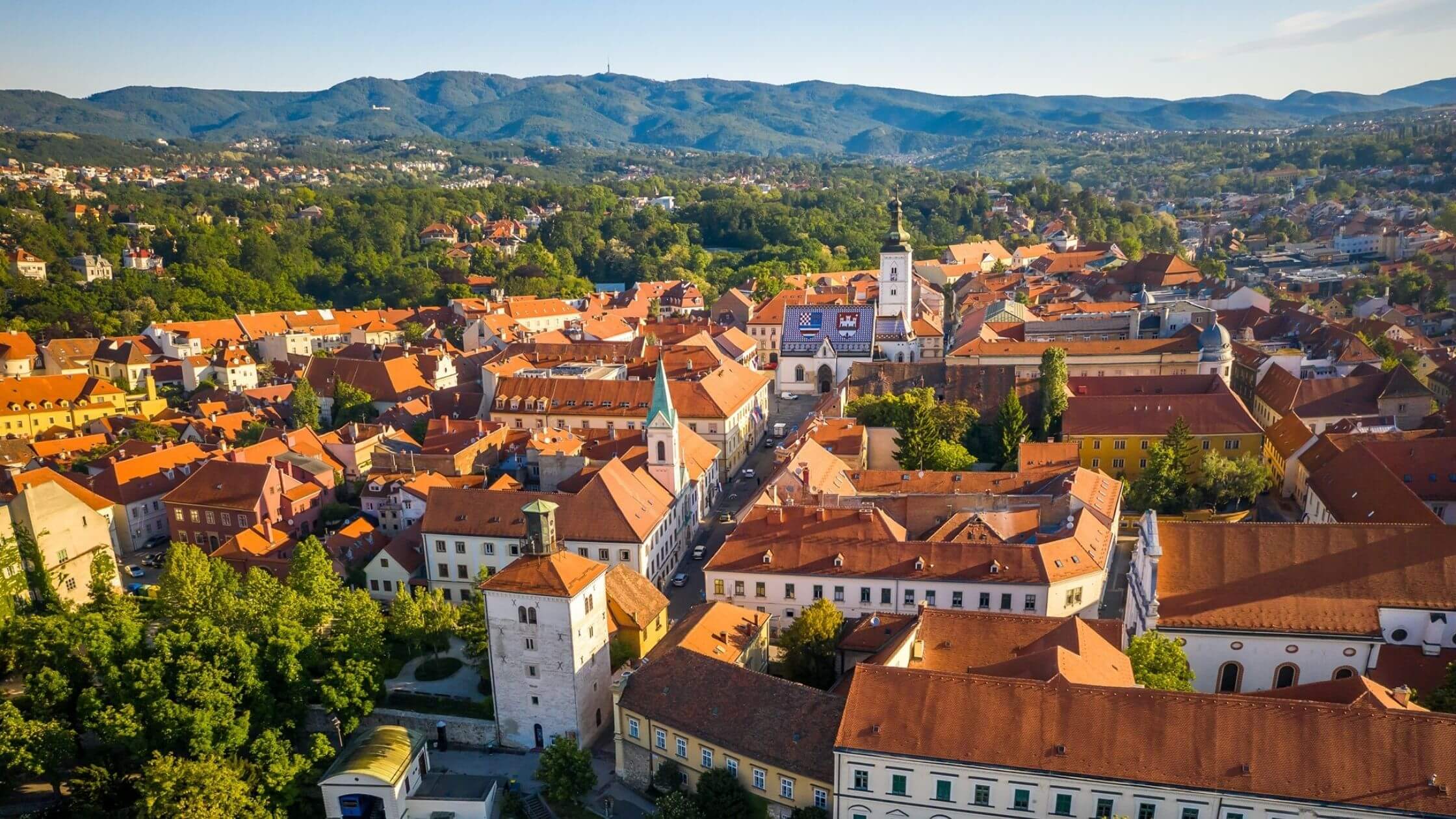
The gorgeous buildings of Upper Town in Zagreb. Visit Zagreb/Facebook.
Cultural landmarks of the city include Ban Jelačić Square which has existed since the 17th century, the Zagreb Cathedral, or the magnificent Croatian National Theater whose unveiling ceremony was attended by Austro-Hungarian Emperor Franz Joseph I. So, make sure you squeeze in some time for a walking tour to absorb the sights of Zagreb’s Old Town.

Evenings on Tkalčićeva Street, Zagreb. Visit Zagreb/Facebook.
Hungry? Head to Dolac market, Zagreb's main open-air farmers market to pick up some fresh, seasonal produce and souvenirs. You can also choose to end your day with a tasty meal and local wine from any of the excellent restaurants, bars, and cafes along Tkalčićeva Street.
Day 2: Rovinj
After a bustling day in Zagreb, the enchanting city of Rovinj is a splendid change of pace. Perfectly situated on the Istrian peninsula, the city boasts a rich heritage, from being settled by Venetian tribes, to becoming part of the Byzantine and Frankish Empires, all reflected in the diversity of the city’s architecture, art, and culture.
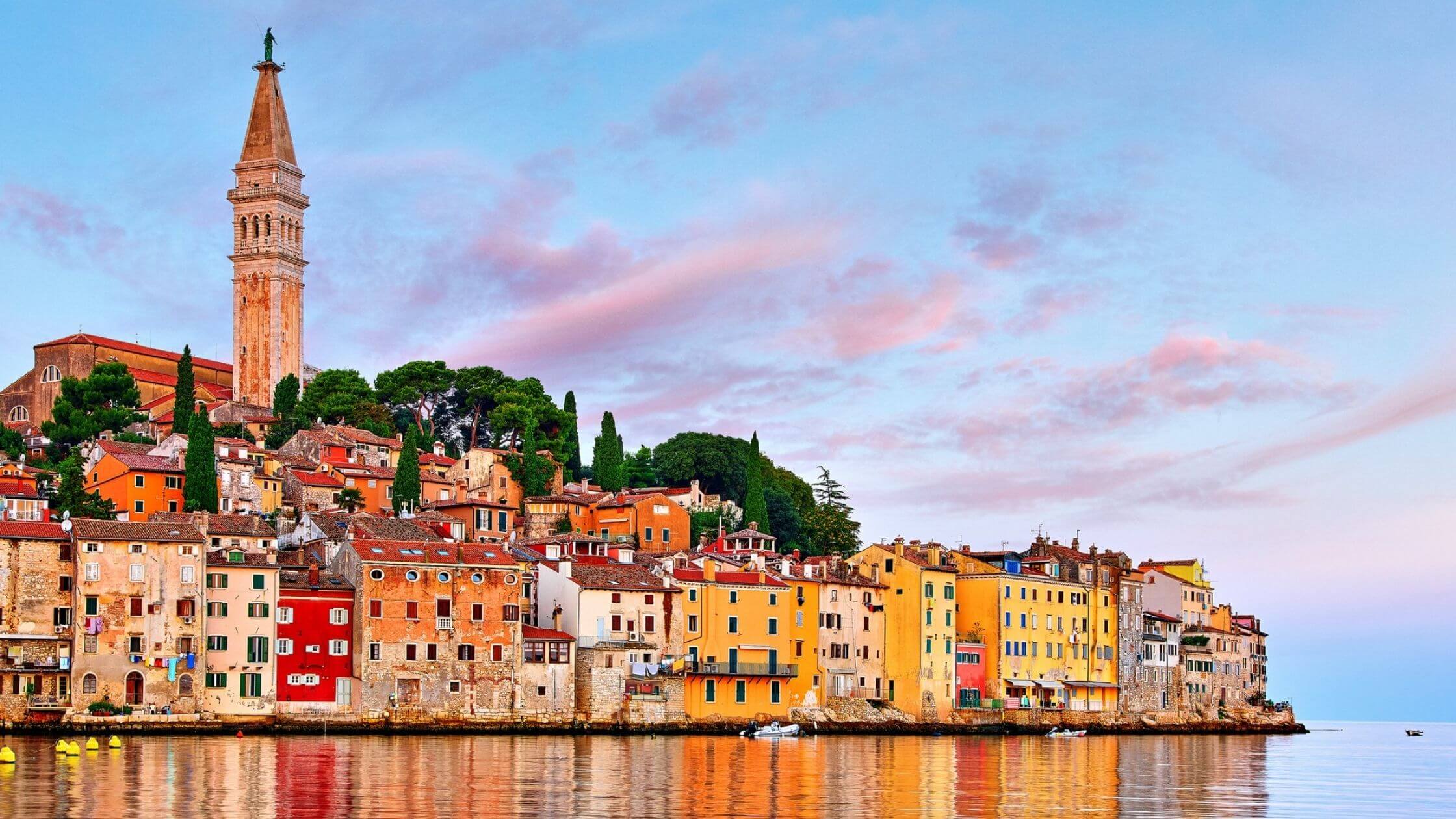
This stunning setting has been a popular film setting for movies such as "The Hitman's Wife's Bodyguard". Rovinj Tourist Board/Facebook.
Stroll along the beautiful cobbled streets and narrow alleys of Rovinj Old Town and make your way towards St. Euphemia Cathedral. Along the way, you should pass by Grisia Street, lined with souvenir stalls and galleries with the most unique pieces to add to your collection.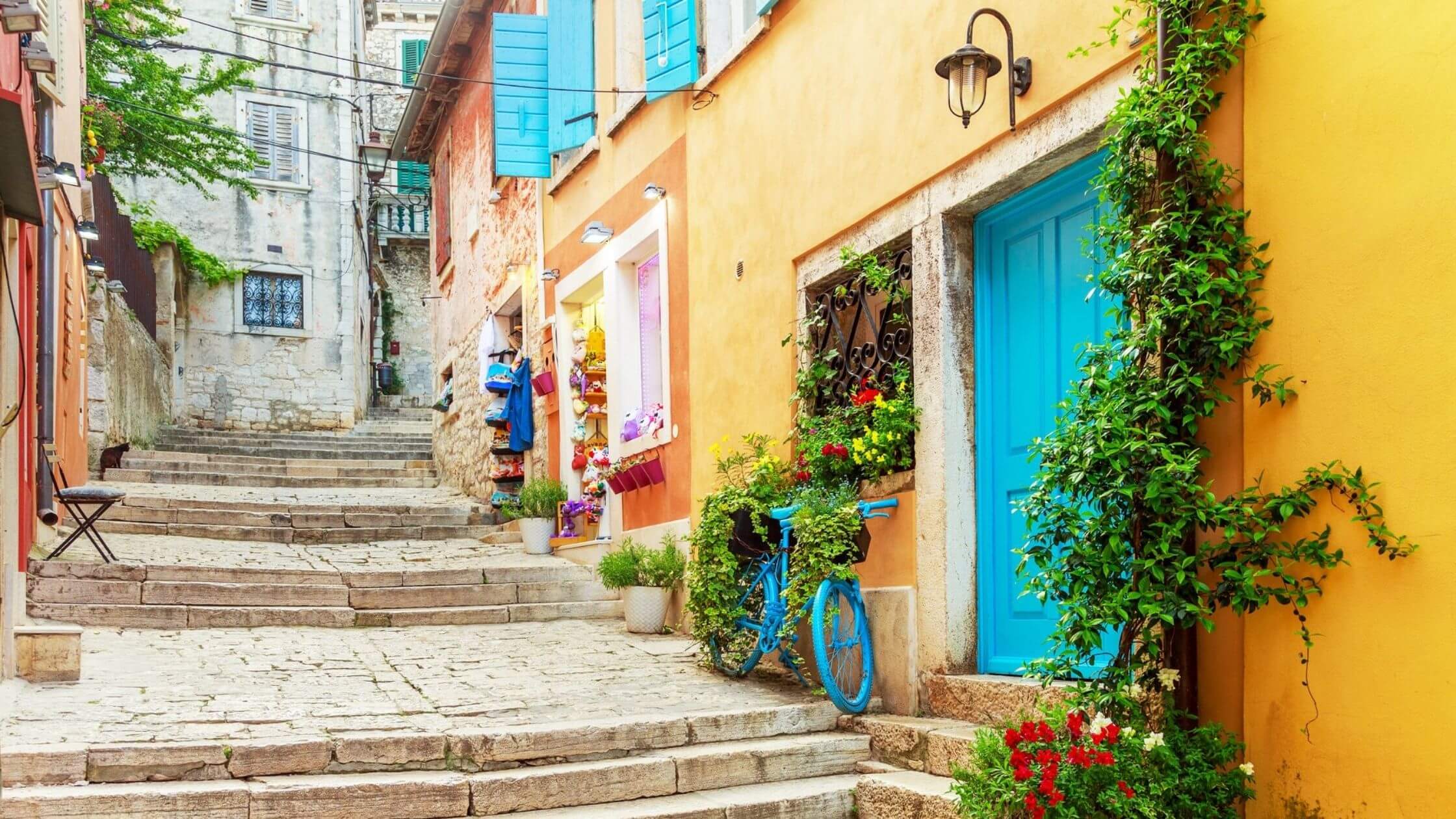
The charming, picturesque streets of Rovinj's Old Town. Rovinj Tourist Board/Facebook.
If you have time to spare, take a day trip to Sveta Katarina, a small picturesque island that’s a mere 10-minute water taxi ride from the pier. Spend the afternoon taking a dip in the aquamarine waters of the bay, or hike on one of the numerous trails dotted around the island, or both!
Alternatively, sit back and relax on some of the most beautiful beaches in Istria such as Amarin, Borik, or Valdaliso Beach.
Day 3: Pula
Before leaving the Istrian Coast, make Pula the next stop on your road trip. Serving as the capital of Istria, Pula was the main military port for the Austro-Hungarian Monarchy at the height of its military glory. Today, remnants of these times are reflected in the city’s breathtaking landscape.
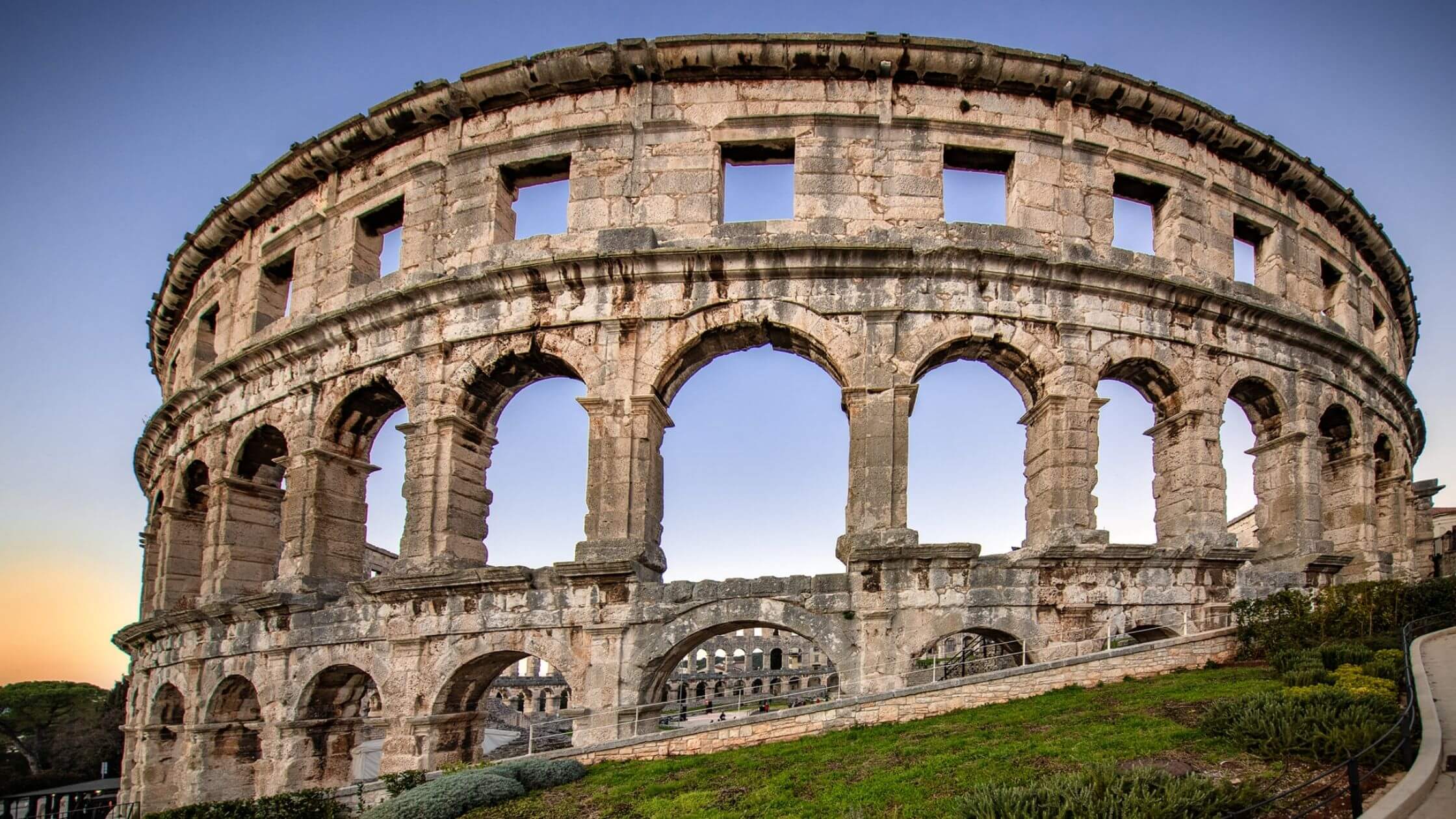
The Pula Arena frequently hosts concerts and festivals throughout the year. Pula Plus/Facebook.
The famous Pula Arena, one of the most well preserved Roman amphitheaters in the world, is a must-see! Another not to be missed landmark is the Temple of Augustus, a monument dedicated to the first Roman emperor in honor of his rule.
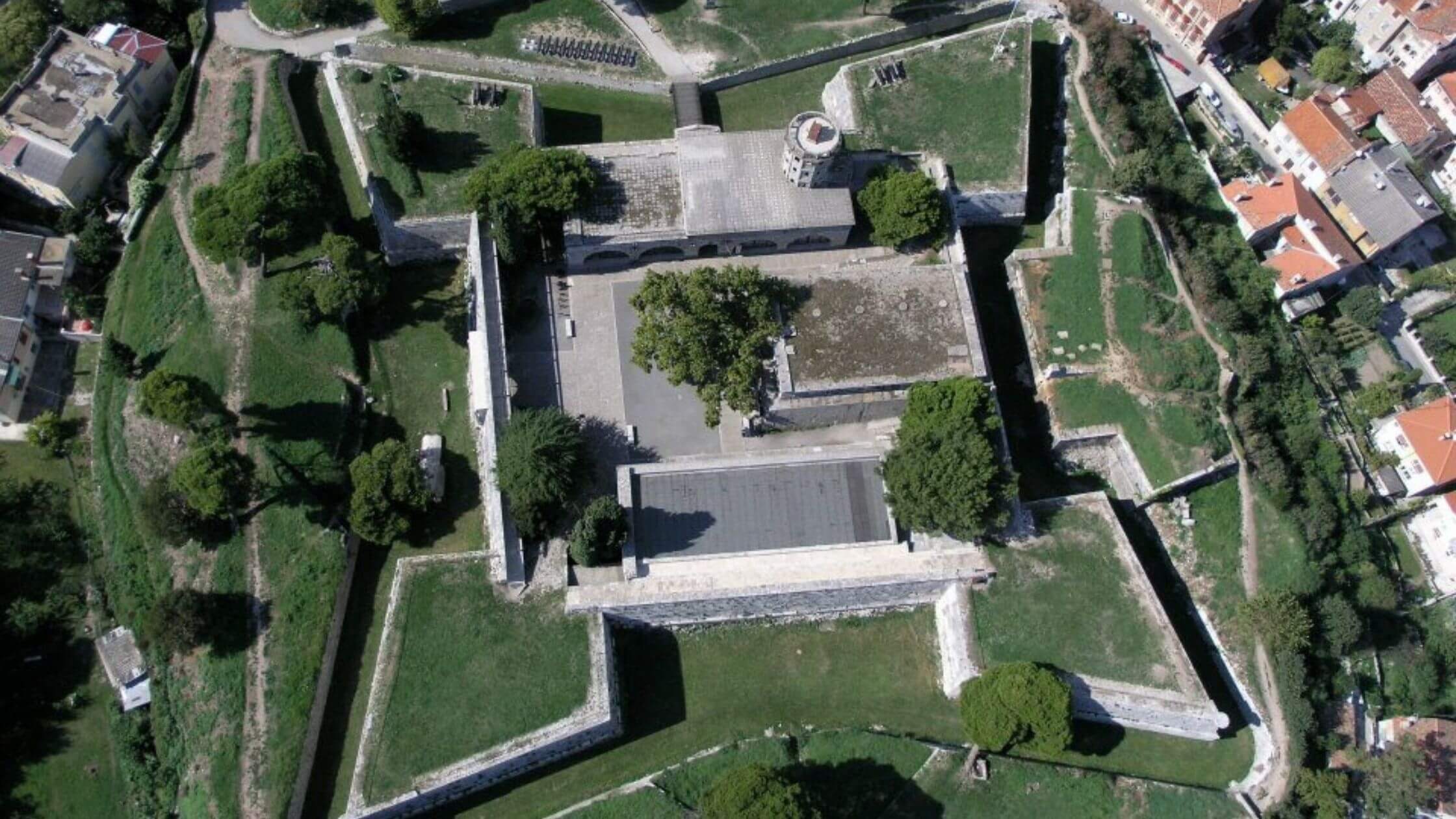
The unique shape of Fort Puna Christo. Pula Plus/Facebook.
Also check out the impressive Fort Punta Christo, which includes an underground section to explore and a well-stocked rooftop bar for refreshments after. You can also enjoy magnificent 360-degree views of Pula from the Venetian Fortress (Kaštel) which also houses the Historical and Maritime Museum of Istria.
Day 4: Plitvice National Park
Although Croatia boasts some of the best coastlines in the world, Plitvice Lakes National Park consistently appears in the top must-see places to visit in Croatia, and for good reason! This UNESCO World Heritage Site holds the title as the oldest and largest national park in Croatia, famous for its gorgeous turquoise lakes. Well worth the detour inland.
 The main walkway of Plitvice Lakes National Park. Plitvice Lakes National Park/Facebook.
The main walkway of Plitvice Lakes National Park. Plitvice Lakes National Park/Facebook.
Be aware that the park can get very crowded during the season! To avoid this, just be prepared to visit early (7-8am), or better still, stop by during off-peak seasons where the park transforms into the perfect winter wonderland.
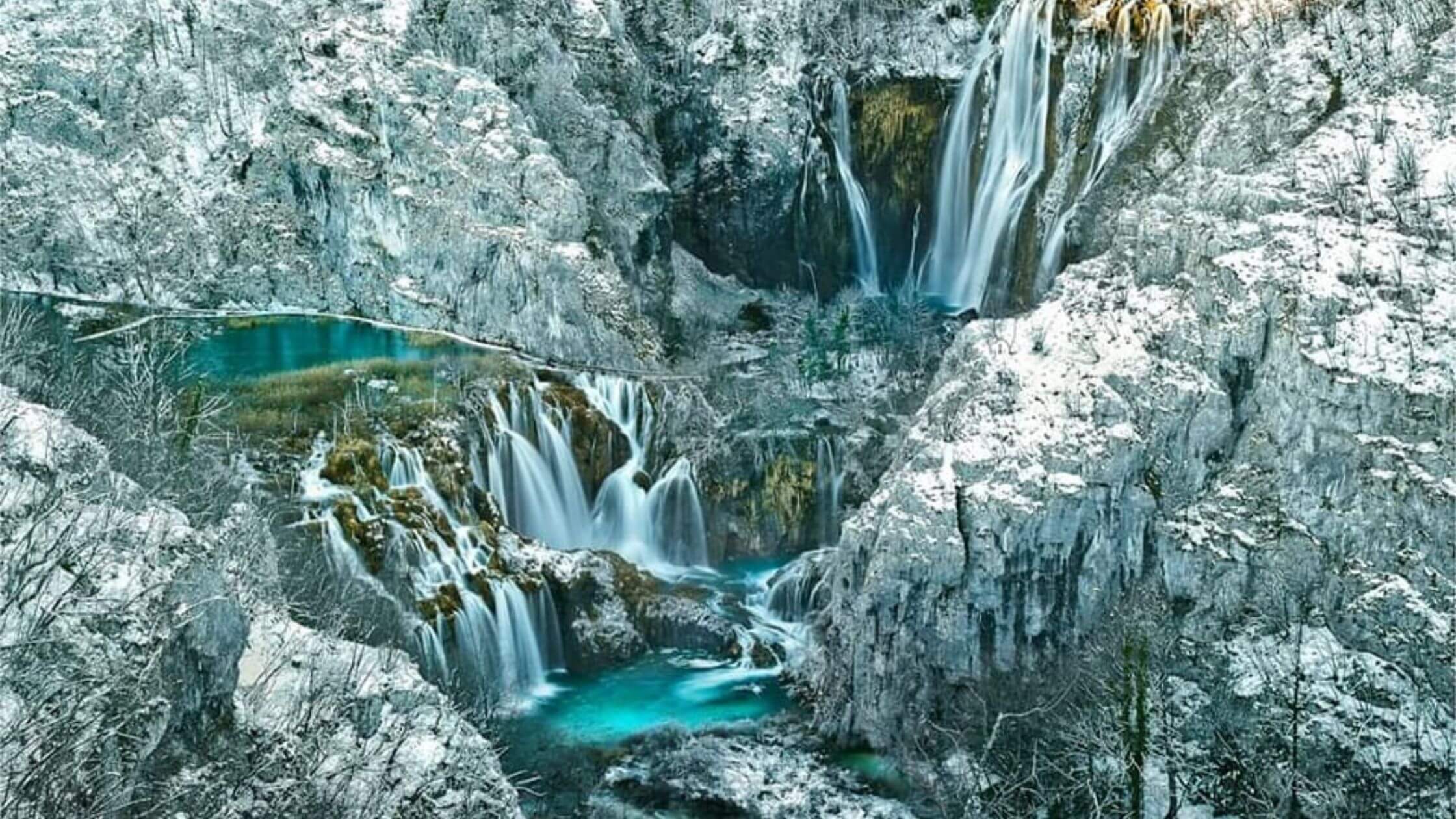
Plitvice Lakes National Park/Facebook.
Day 5: Zadar
After a day in the lush forests, take a scenic drive back to the Dalmatian coast and spend a day in the charming city of Zadar, the oldest continuously inhabited Croatian city. Today, cozy cafes and art galleries are seamlessly woven into remains from the times of Julius Caesar and Emperor Augustus.
Enjoy a relaxing stroll through Old Town and admire the historical architecture including the Church of St. Donatus, the Landward Gate, the Cathedral of St. Anastasia, and the Roman Forum.
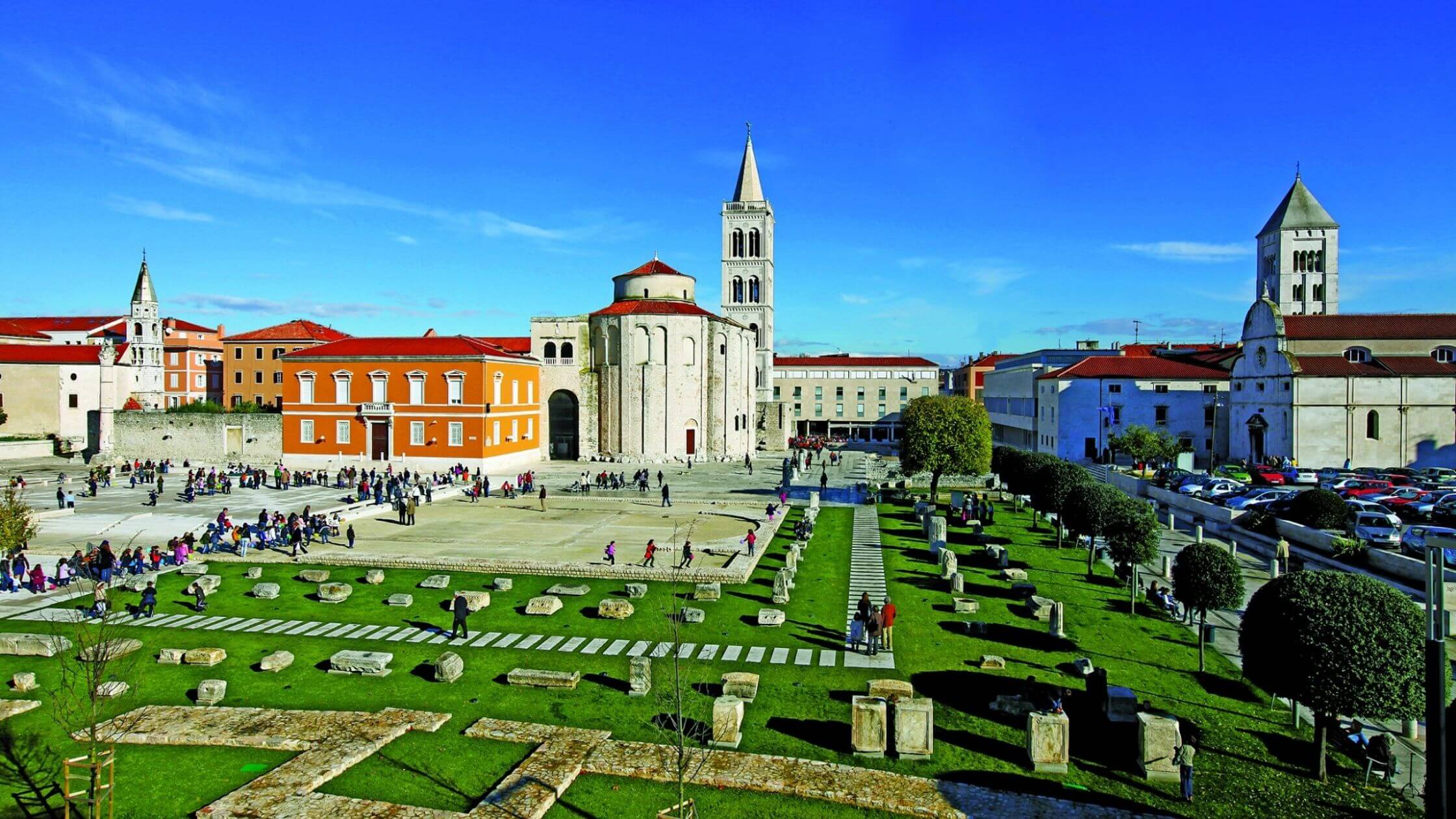
Ruins in the Old Town of Zadar. Zadar Region/Facebook
Along the way, catch the famous Sea Organ, and a sunset so beautiful, it even captivated Alfred Hitchcock! Just after sunset, take in the light show at the Sun Salutation, an installation created by Nikola Bašić, the same artist who designed the sea organ.
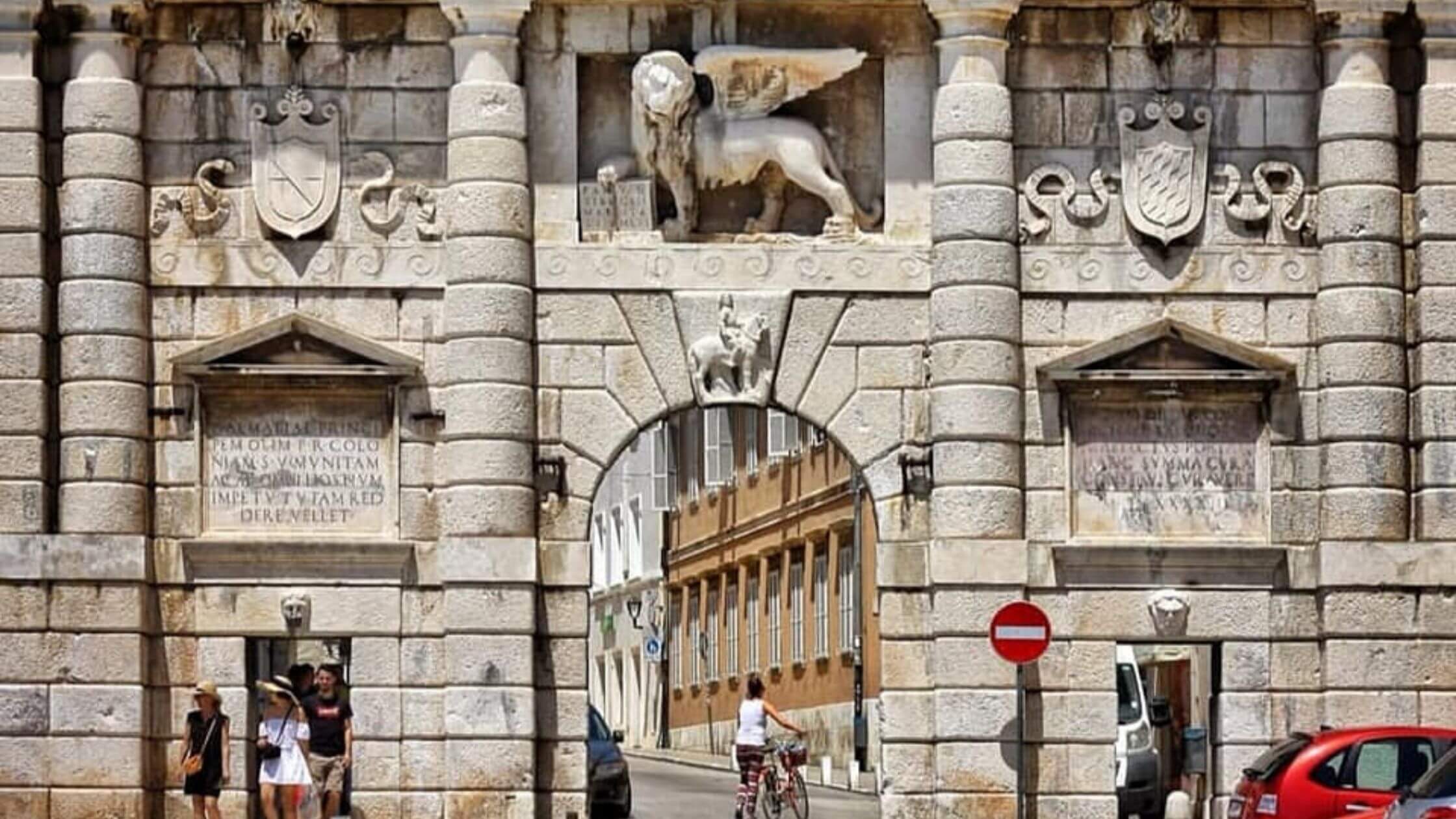
The Landward Gate, Zadar. Zadar Region/Facebook
If you have some time in between, head to Pag Island to try some of the famous Paski Cheese or to Nin, home to Queen’s Beach, the longest sandy beach in Croatia. Other gorgeous beaches along the coast of Zadar include Kolovare and Borik.

Award-winning sheep's cheese from Pag Island. Pag Tourist Board/Facebook.
Day 6: Split
Welcome to Split, the largest city in Dalmatia, and second-largest in all of Croatia. The city was founded as the Greek colony of Aspálathos between the 3rd and 2nd century BC.
It was later where Diocletian's Palace was built for the Roman emperor in AD 305. The palace also houses the Peristil, or the main square, another great place to enjoy some coffee and people-watch in addition to the Riva promenade.
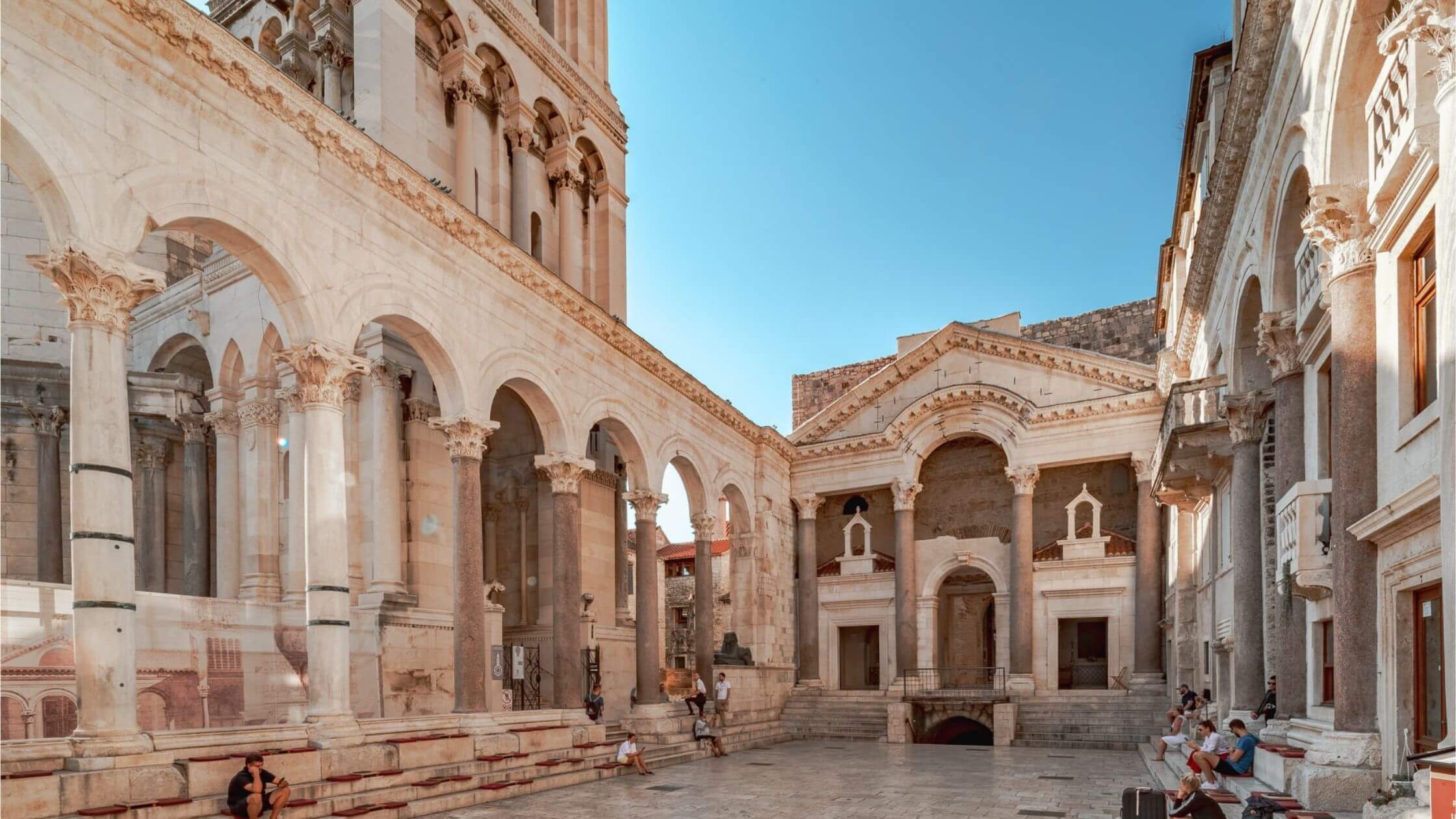
Enjoy a drink inside the walls of the Diocletian's Palace, Split. Visit Split/Facebook
While exploring the Old Town, stop by the Green Market, the largest farmer’s market in Split, to pick up some fresh, organic produce. Turn the corner and it is difficult to miss the 8.5-meter statue of Gregory of Nin, sculpted by world-renowned artist Ivan Meštrović. Rubbing the statue’s toe is said to bring good luck, so much so that it has been worn smooth by visitors over the years.
You can also squeeze in a light hike up Marjan Hill, also known as the “lungs of Split”. Its summit is an ideal place for a picnic, offering marvelous views of the harbor and neighboring islands.
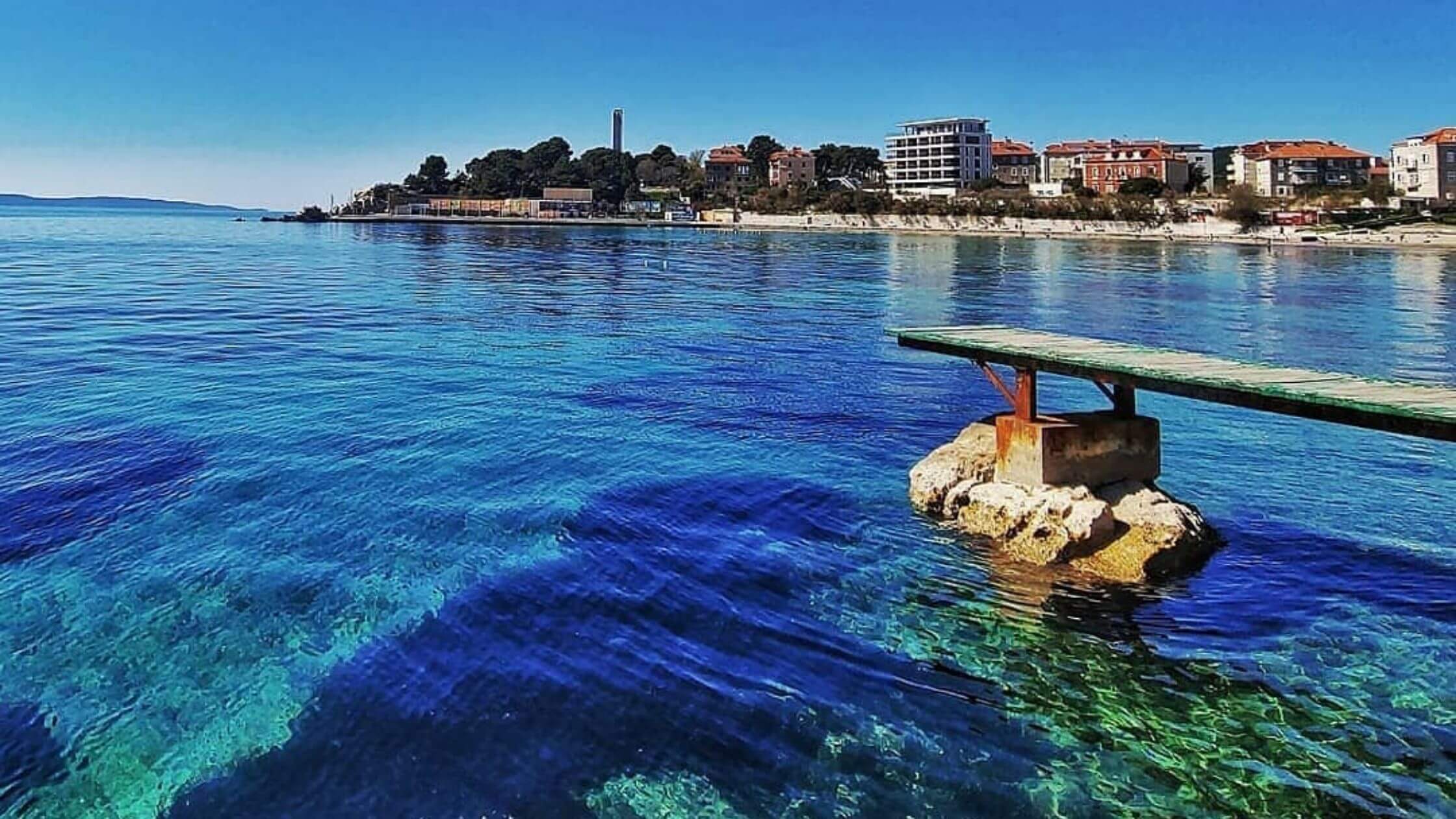
The crystal clear waters of Bačvice beach. Visit Split/Facebook
Fancy another beach day? Bačvice beach is a popular hangout spot in the center of Split. Relax at one of the many cafe bars and watch the locals play picigin, a traditional ball game. Rumor has it this beach is also where the sport originates from.
Day 7: Krka/Omiš/Trogir
Don't be too quick to leave Split. From here, there are several options for day tours to surrounding attractions.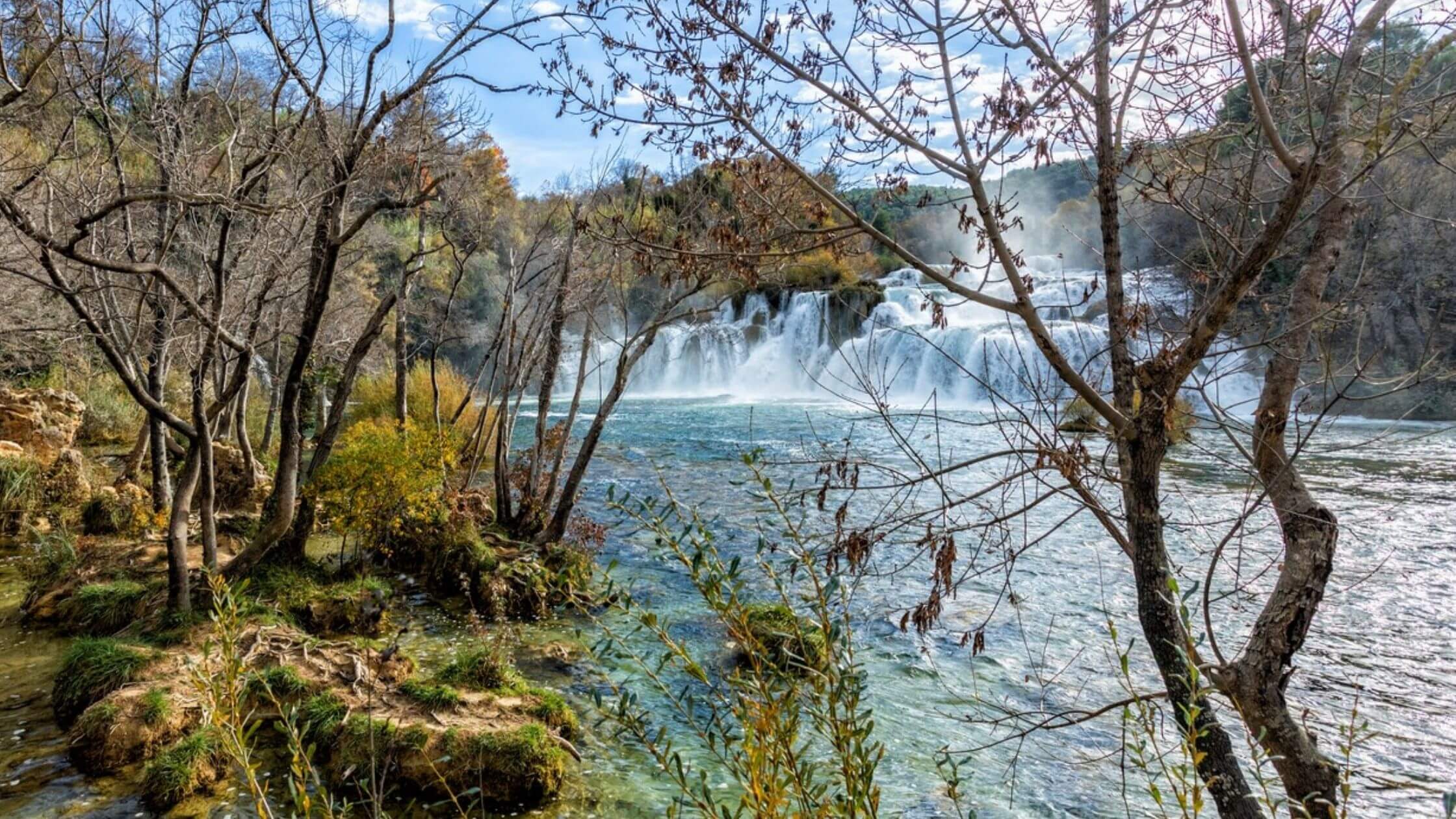
Some of the most stunning waterfalls in Croatia can be found at Krka National Park. Krka Nationa Park/Facebook
For nature lovers, Krka National Park is another national park about an hour’s drive from Split. Spend a day walking along well-maintained trails that wind along some of the most stunning waterfalls in the country. Again, make sure you get there early to avoid the crowds!

Try white water rafting in Omiš. Tourist Board Omiš/Facebook
For those craving more action, head to the picturesque town of Omiš which offers one of the most dramatic scenes on the coast. The city is nestled in a canyon surrounded by gray, craggy mountains, contrasting the peacock blue waters where the Cetina River meets the Adriatic Sea. Omiš offers white water rafting, free climbing, ziplining, abseiling, and canyoning, amongst other activities for visitors seeking a bit of a thrill on their vacation.

Just one of the many well-preserved remains scattered around Trogir's Old Town. Visit Trogir/Facebook
For the history buff, head to Trogir which has the best-preserved Romanesque-Gothic complex in all of Central Europe. Take a walk around the Old Town, surrounded by walls comprising a series of dwellings and palaces from the Romanesque, Gothic, Renaissance, and Baroque periods.
Day 8: Hvar
With over 1,000 islands, it wouldn’t be a complete trip to Croatia without doing some island hopping. From Split, take the 1-hour ferry ride over to Hvar. Its beauty and vibrant nightlife have made it a regular vacation spot for the likes of celebrities such as George Clooney and Beyonce.
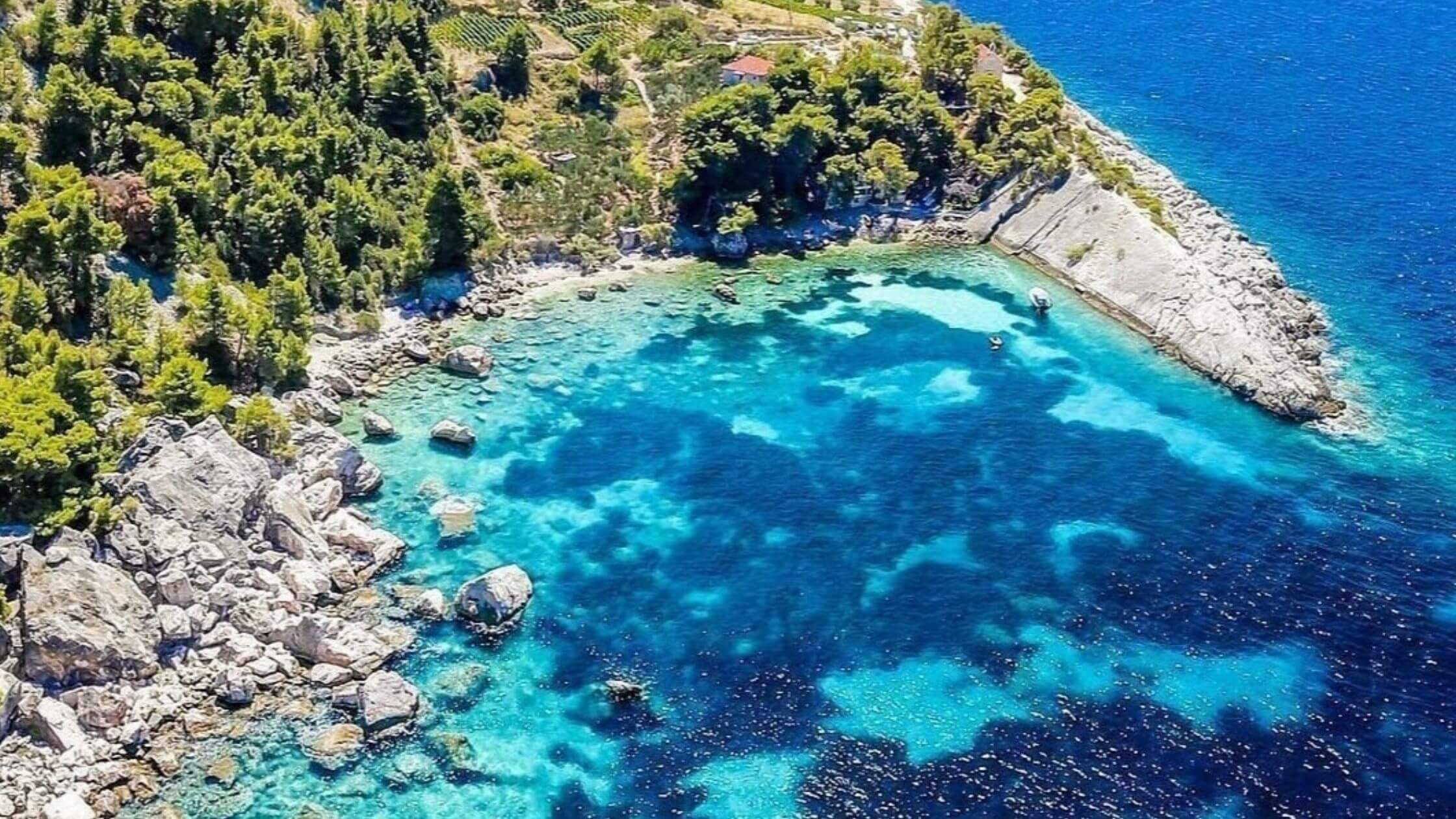
Hvar is one of the longest and sunniest islands in Croatia. Hvar Tourist Board/Facebook
Start by wandering around St. Stephen’s Square, the largest square in Croatia and don’t miss the Cathedral of St. Stephen and the Hvar public theater. For the best view, climb to the top of the Španjola Fortress to get an unobstructed view overlooking Hvar Town and nearby Pakleni Islands. You can even rent a small boat (no license required) to explore these islands on your own!
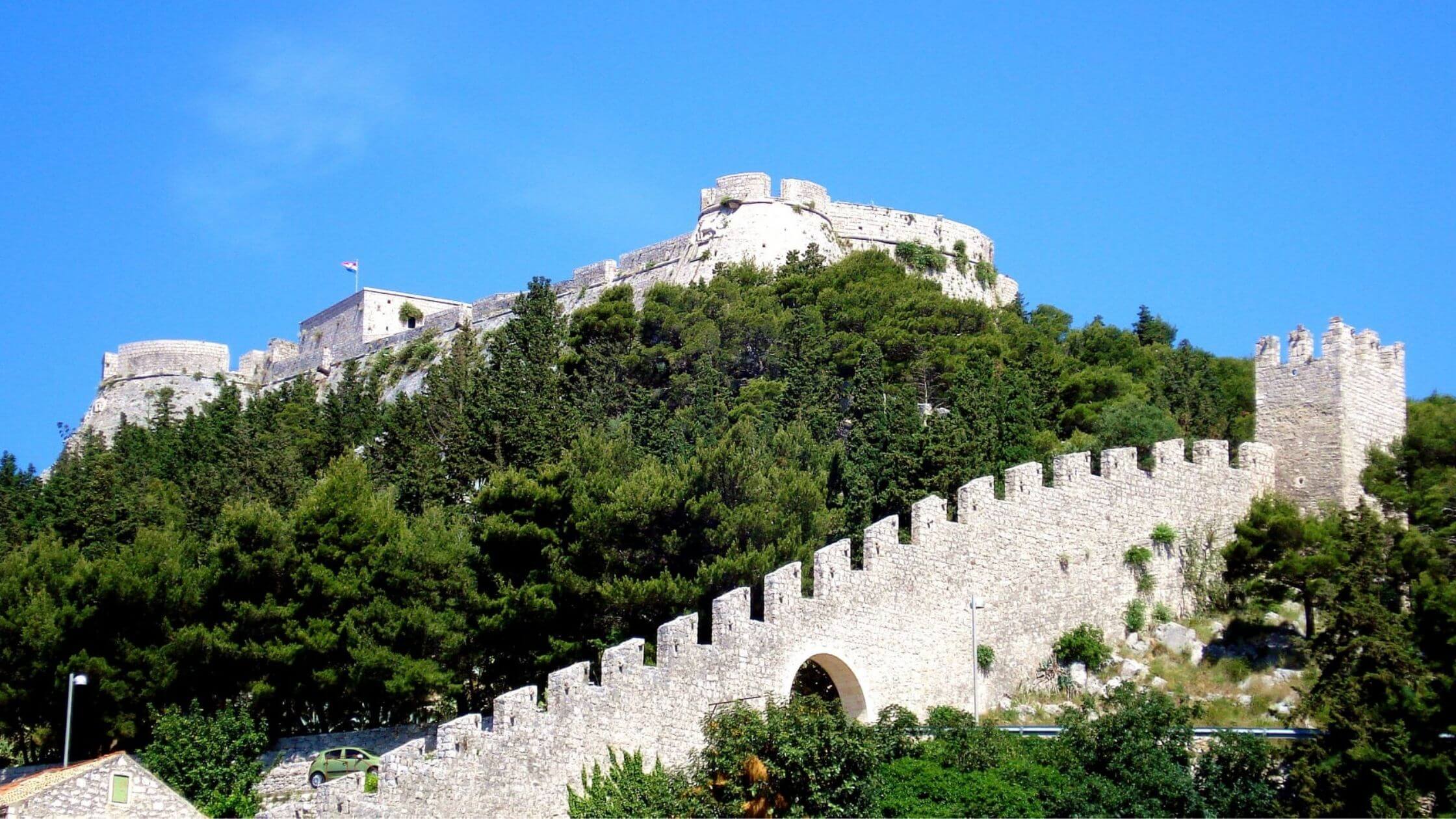
The view from the top of the Španjola Fortress is unparalleled on the island. Hvar Tourist Board/Facebook
Once you’ve taken in all these sights, enjoy another relaxing beach day at one of the many pristine beaches such as Malo Zaraće, Dubovica, or Pokonji Dol.
Alternatively, if you’re looking for another day trip, book a tour with one of the local travel agencies to the Blue Caves on Biševo and marvel at its clear, iridescent blue waters.
Day 9: Korčula
After the buzz of Hvar, take the ferry to the tranquil town of Vela Luka on the island of Korčula, the birthplace of famed explorer Marco Polo and home to some of the best Croatian wines.
From Vela Luka, take a scenic drive towards the town of Korčula, also known as “little Dubrovnik”. Along the way, stop by the numerous family-run vineyards that welcome visitors for wine and cheese tastings.
Grk is a white wine variety grown almost exclusively on Korčula, other white wines such as Pošip and Rukatac are also premier Croatian wines, often served on celebratory occasions. For fans of red wine, do grab a bottle or 2 of Plavac Mali.
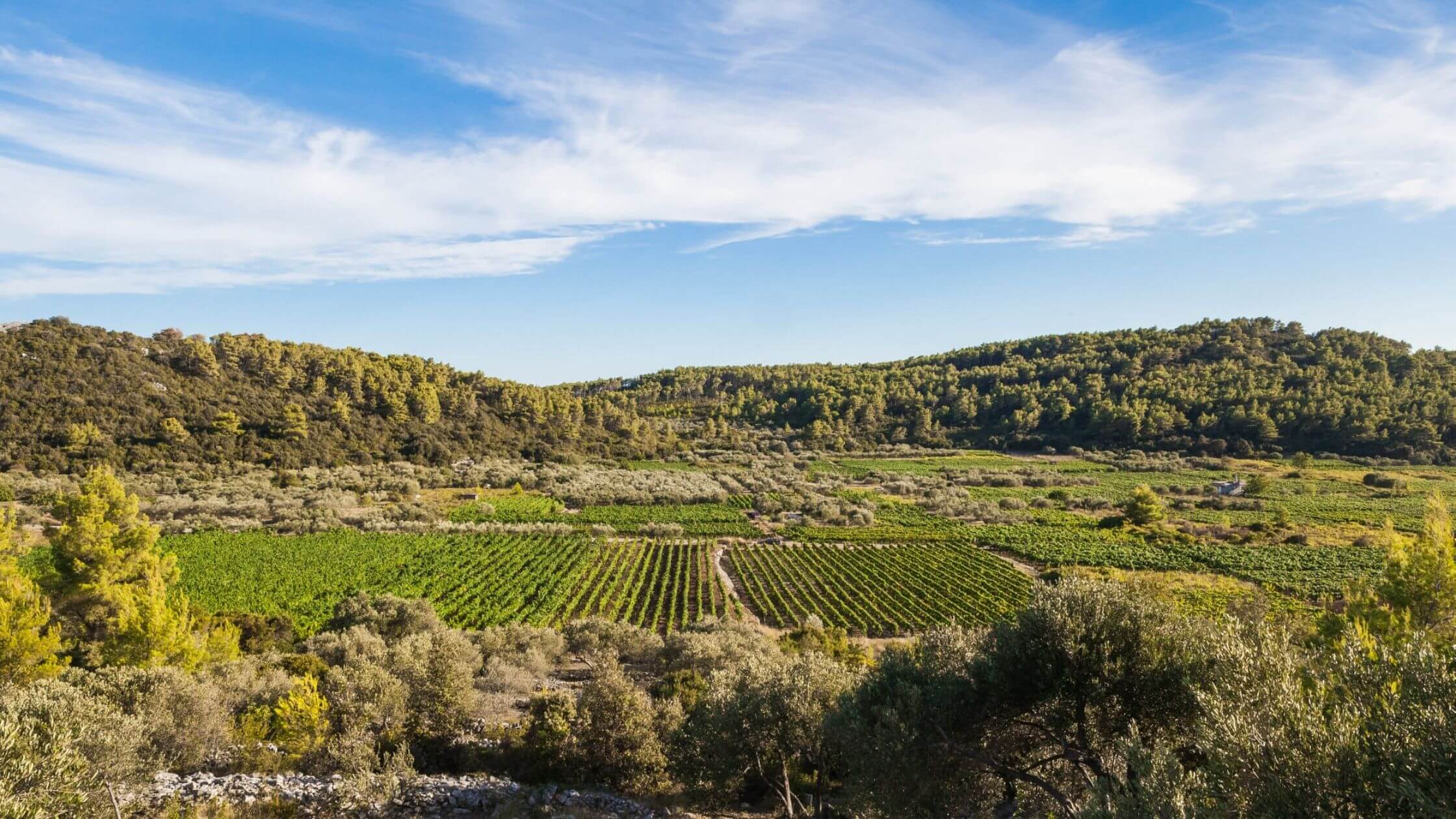
Vineyards of Korčula island. Visit Korčula/Facebook
In Korčula, walk off the afternoon’s indulgences exploring the streets of the Old Town with its architectural influences by the Venetian Renaissance, before capping off the night with a meal and more wine at any of its superb restaurants.
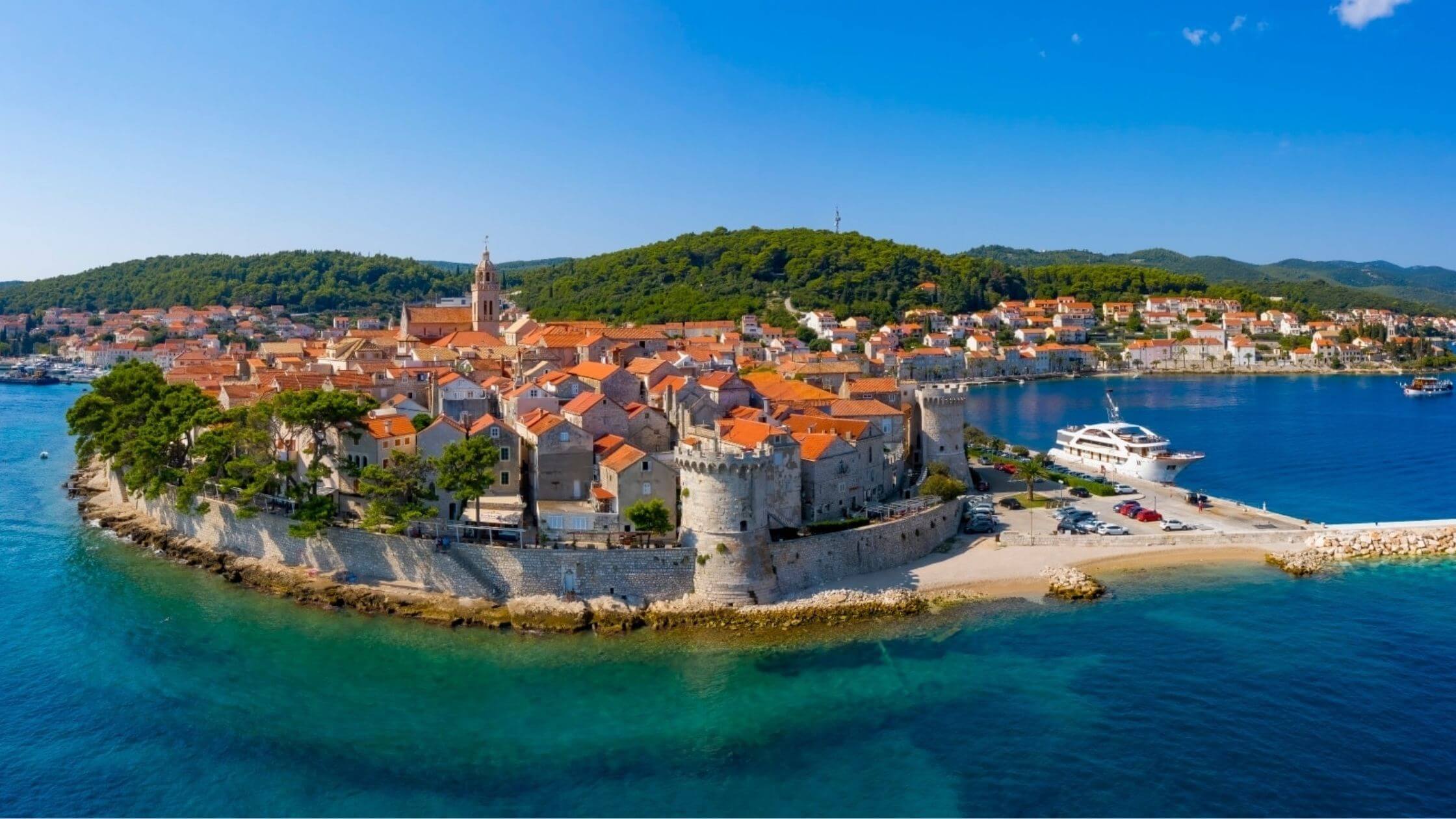
Korčula town. Visit Korčula/Facebook
Day 10: Dubrovnik
There’s no better way to end the trip than with Dubrovnik. And yes, there is no shortage of Game of Thrones tours to indulge your senses, but there is so much more to this medieval city than where Cersei Lannister did her walk of shame.
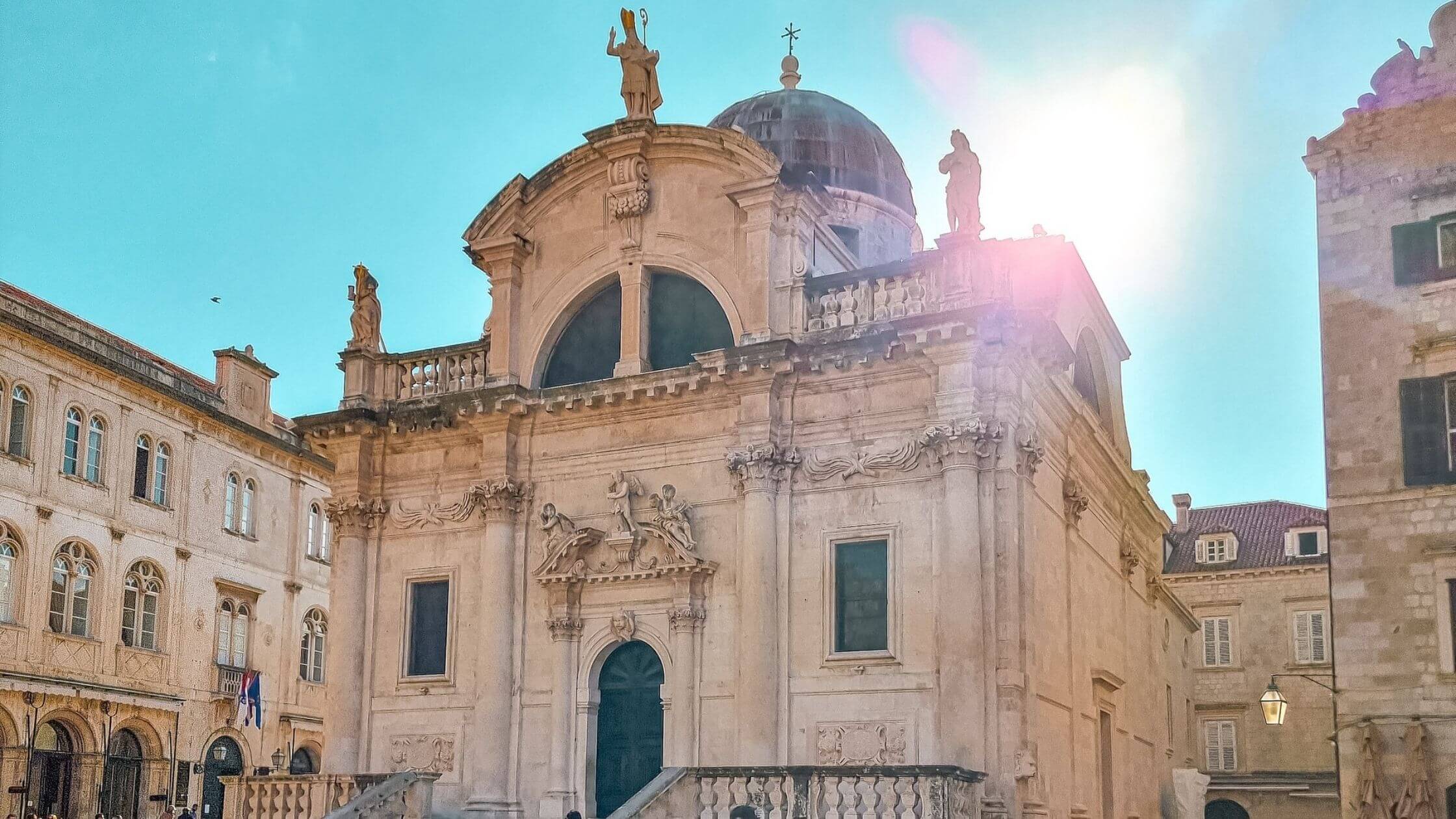
The beautiful Saint Blaise's Church in Dubrovnik was built during the 10th century. Dubrovnik Tourist Board/Facebook
Talk a walk along the city walls and through Stradun, Dubrovnik’s main street. From here, you can also catch Onofrio’s Large Fountain that used to supply Dubrovnik with fresh water during the Middle Ages and other impressive structures including the Clock Tower, Saint Blaise's Church, Saint Ignatius Church, Cathedral of the Assumption, and the Franciscan Monastery.
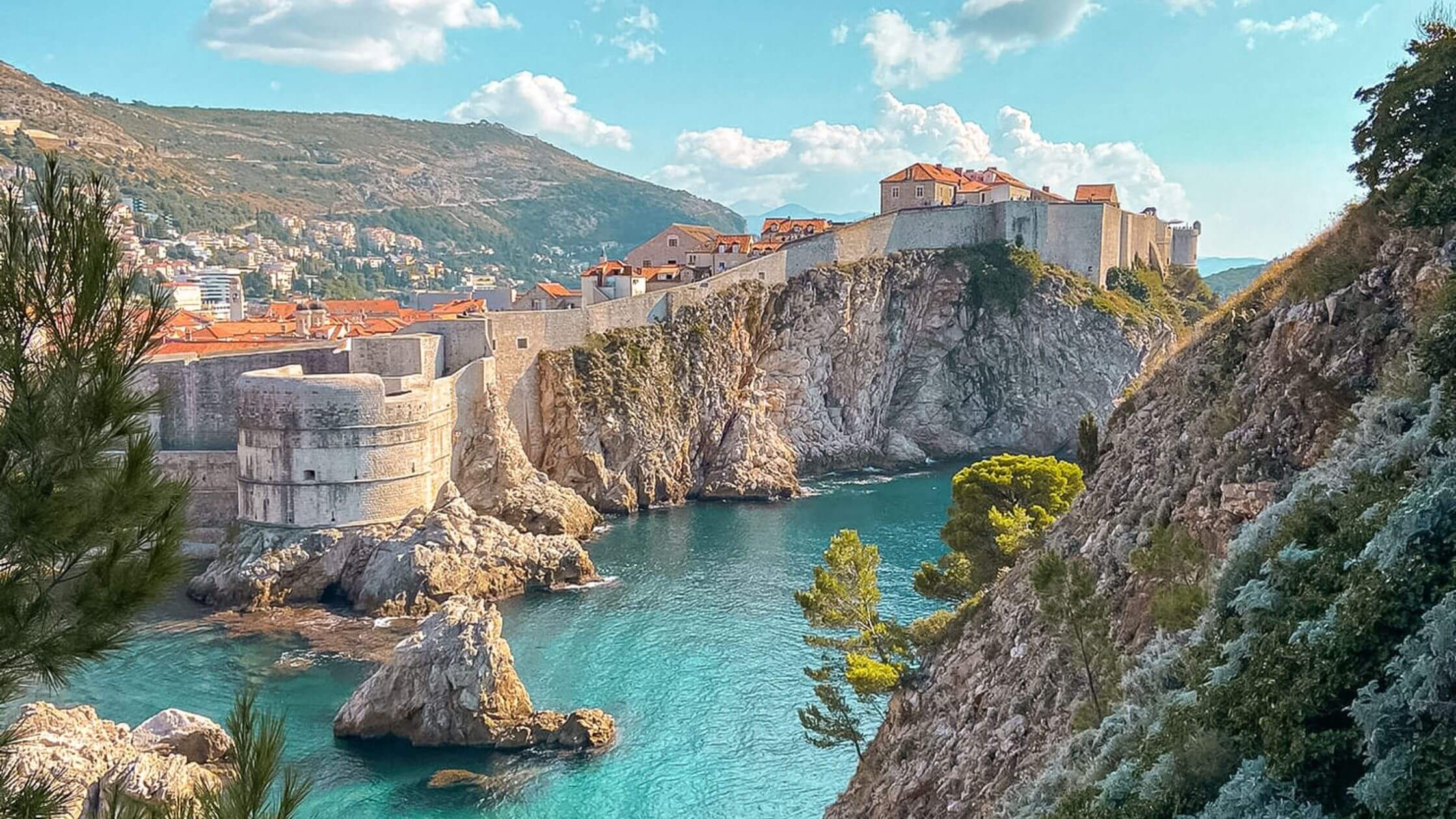
The view from beyond the walls of Dubrovnik looking upon Fort Lovrijenac. Dubrovnik Tourist Board/Facebook
Watch the sunsets and reminisce on your amazing road trip through the country at one of the cliff bars along the city walls, before capping it all off with an exquisite meal at one of the many Michelin-starred or recommended restaurants Dubrovnik has to offer.

Nothing like a luscious meal to top off a fantastic experience road-tripping in Croatia. Dubrovnik Tourist Board/Facebook
And that’s all folks, you’ve done it! Croatia in 10 days! Bear in mind, this is merely the appetizer of what Croatia has to offer. Customize this guide to better suit your tastes and pace and remember, don’t hesitate to ask the locals in order to unlock the best secrets each location has to offer.
For more on travel in Croatia, follow TCN's dedicated page.
Roman Mosaics Unearthed in UNESCO-Protected Historical Centre of Stari Grad, Hvar
February 20, 2022 - Founded by the Ancient Greeks more than 2,400 years ago, Hvar's oldest town continues to reveal secrets of the past, this time from the Roman Era.
Text from the Stari Grad Museum Facebook page.

Archaeological excavations are currently underway in Stari Grad on the island of Hvar, because of the construction works on the town's water supply and sewage network. Part of the excavation was carried in the Middle Street (about 20m in length) where, in addition to the previously known mosaic (discovered in 1923), we found the remains of several other rooms with the remains of mosaic floors.
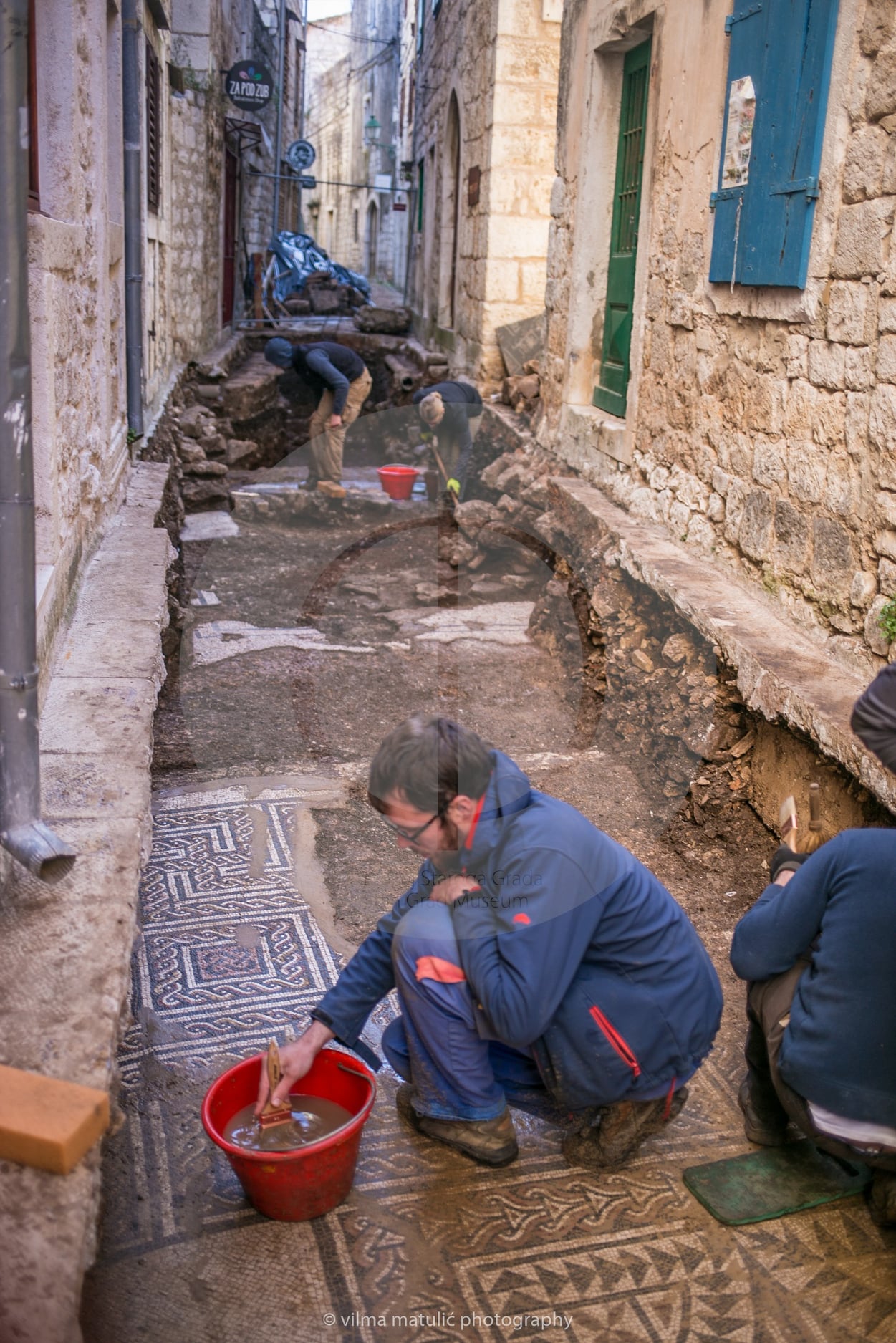
The mosaics are decorated with multicolour geometric and floral motifs and are of superior workmanship. By analogy with similar mosaics and known workshop styles, thy can be dated to the 2nd century AD. We will have a better insight into the purpose of this luxurious building of the Roman Faria after the analysis and interpretation of archaeological finds and after merging all the plans of rooms with mosaic floors under surrounding houses, which were excavated in previous decades.
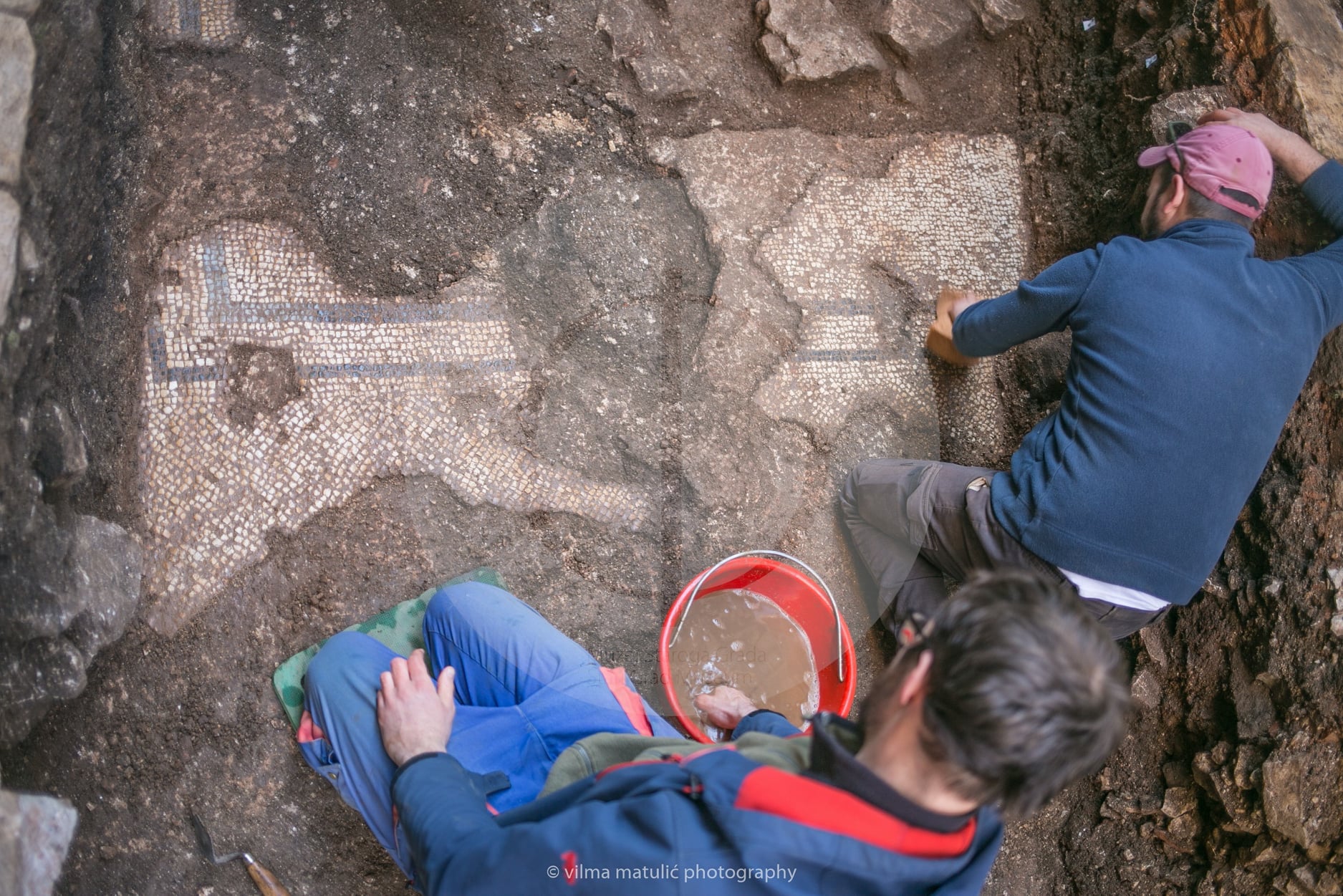
In the past one hundred years, this area has been excavated by numerous archaeologists (Frane Bulić, dr. sc. Jasna Jeličić-Radonić, Ana Kordić Galić), while the last conservation and restoration work on the mosaics was carried out by dr. sc. Branko Matulić and dr. sc. Tonči Borovac. The current excavations are led by dr. sc. Marina Ugarković from the Institute of Archaeology, while the deputies are Andrea Devlahović from Stari Grad Museum and Martina Korić from the Institute of Archaeology. Dr. sc. Sara Popović from ArheoProjekt and a multi-member team of young archaeologists from all over Croatia are also participating in the excavations, which are conducted under the supervision of Saša Denegri from the Conservation Department of the Ministry of Culture in Split.
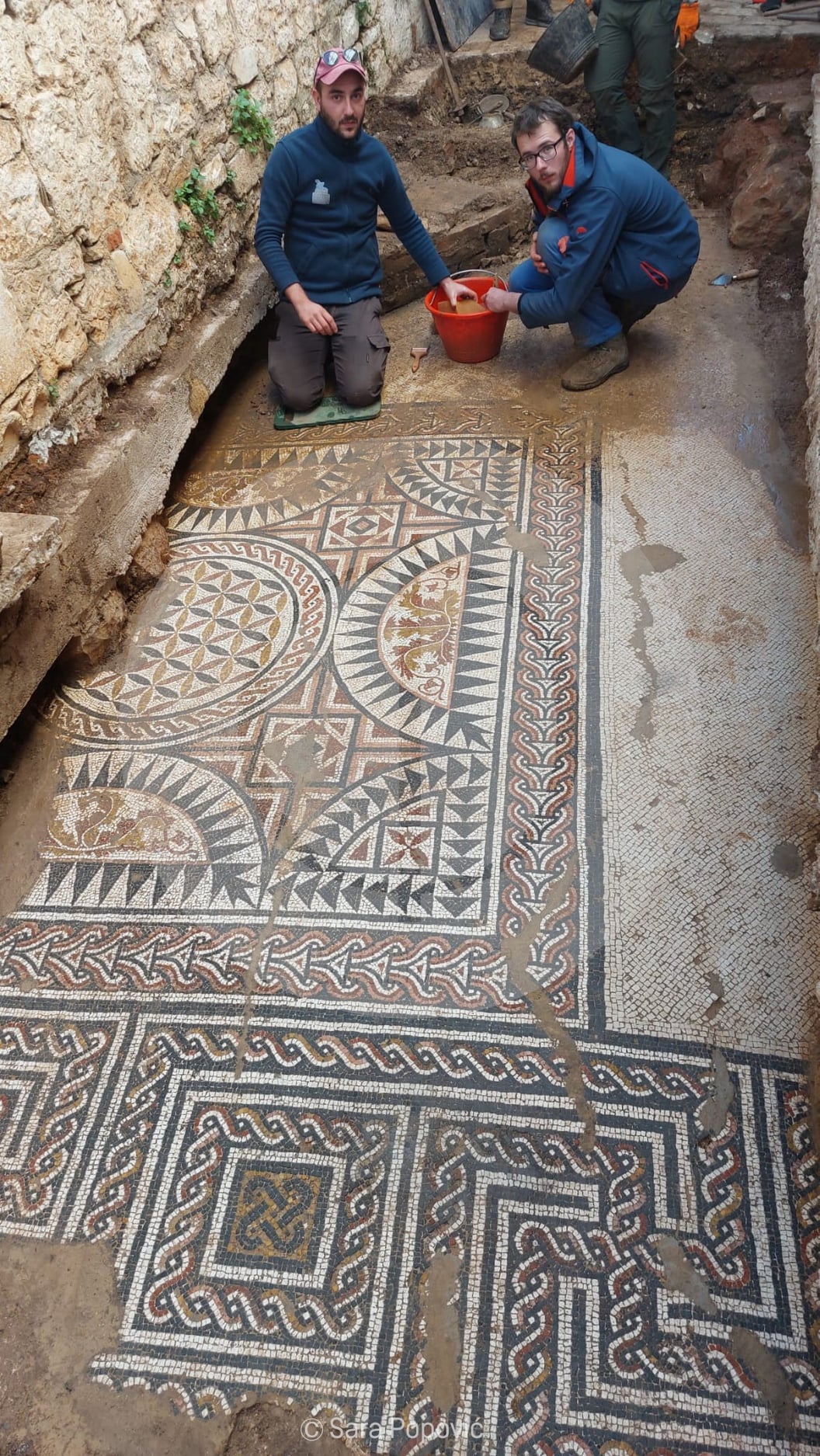
Finally, we should mention that the decision on the presentation of the preserved mosaics will be made by the Conservation Department from Split in cooperation with the Stari Grad Municipality.
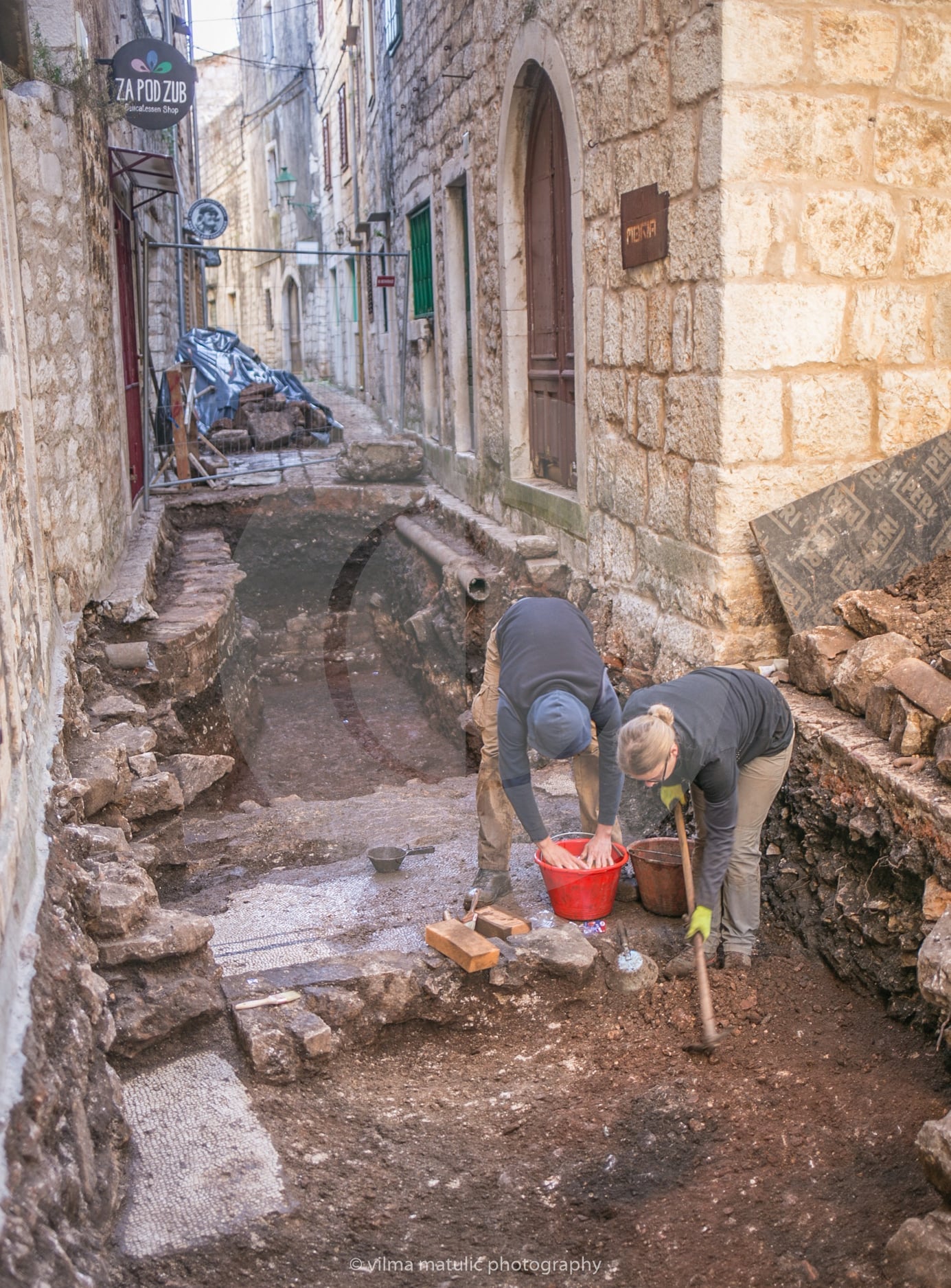
[We remind you that the use of photos is allowed as long as the photographer's name is mentioned.]
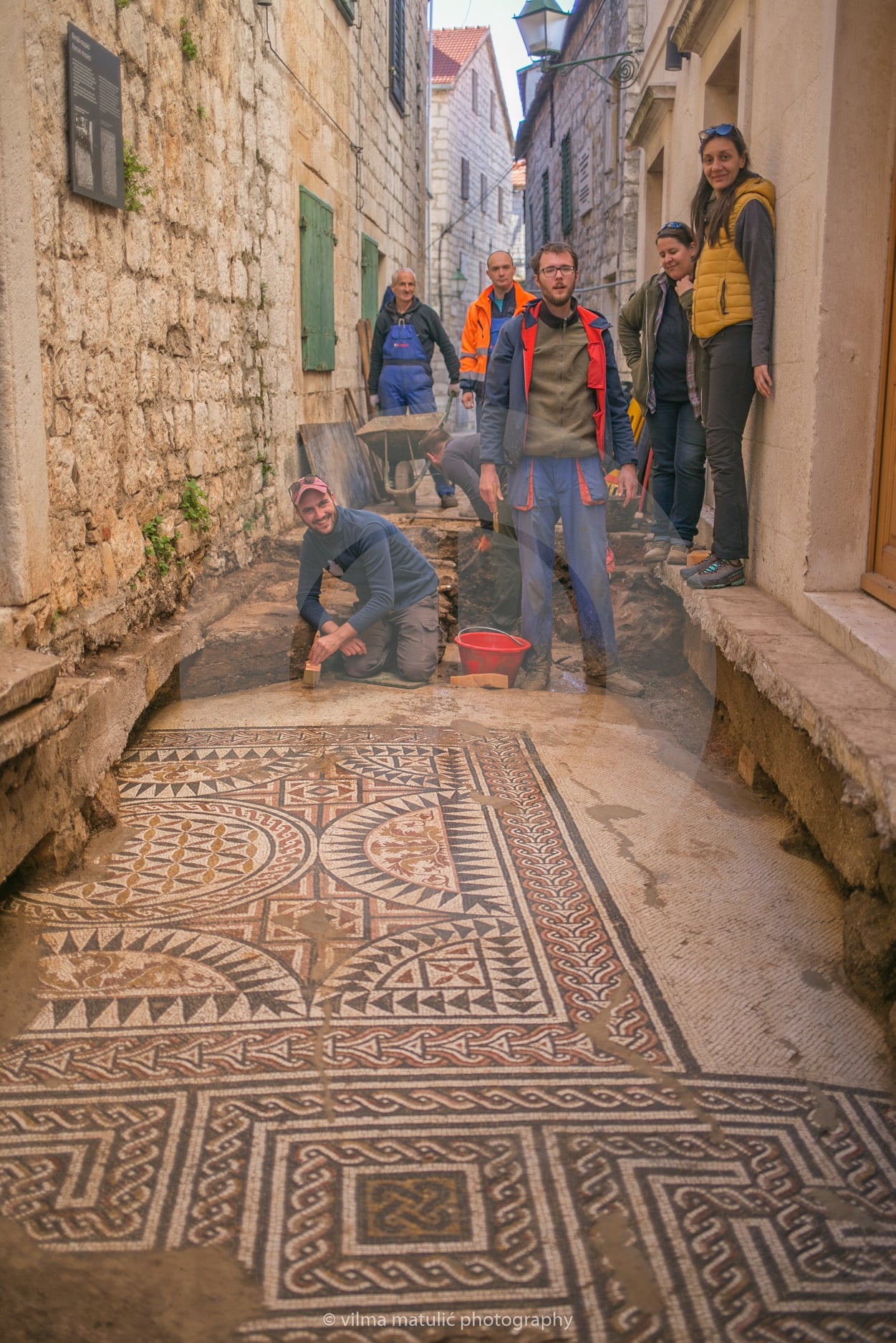
To learn more about this amazing town, check out the Total Croatia Stari Grad in a Page guide.
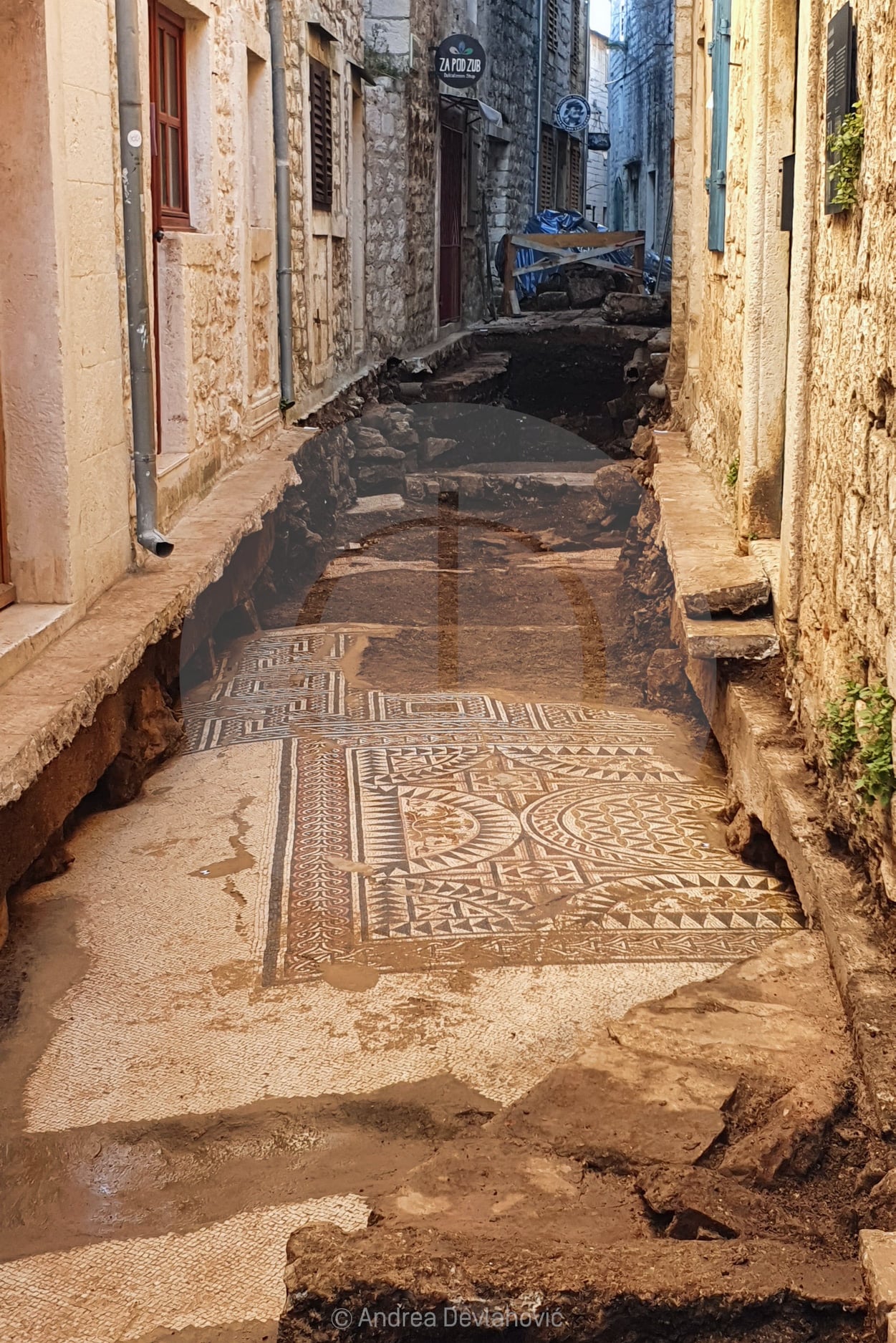
Well-Preserved Luxury Ancient Villa Found in Carkvica Bay near Jelsa
February 20, 2022 - Professor Tea Katunarić Kirjakov and her team have uncovered an ancient luxury villa in Carkvica Bay near the town of Jelsa on Hvar.
According to historical sources, the first written mention of an archeological site in the Hvar Island seabed, but also the whole of Croatia, was left by the Italian naturalist Alberto Fortis in 1774, recording the findings of Roman amphorae in Sućuraj.
Since then, more than 200 similar sites have been registered in the area, and many underwater archaeologists have given their all to their research and protection. Among them is Tea Katunarić Kirjakov, a professor at the Academy of Arts in Split.
Her recent engagement has been associated with a fully preserved Roman shipwreck with wine amphorae from the turn of the second to the first century BC in the seabed of the island of Šćedro.
The ship did not reach Rake Bay, where the architectural remains of the Roman villa dock are found today. The seabed is rich in traces of life from all periods. However, she was recently transferred to the northern side of Hvar to work with her team in Carkvica Bay near Jelsa, reports Slobodna Dalmacija.
"Since we heard about this locality from local fishers and divers, we decided to check what it is really about, map and valorize it in the right way, and determine its age and cultural value. Of course, it should be formal and legal, but also protected so that the site could eventually be included in the tourist offer," says Katunarić Kirjakov.
The activities are carried out in cooperation with the Ministry of Culture, the Jelsa Tourist Board, and the Agency for the Protection of the Stari Grad Field. Her team consists of local divers Bariša Sušić, Boris Huljić and Dino Ćurin, and archaeologist Vedran Katavić from Split.
At the entrance to the bay is the church of Sv. Luka from the 14th century, probably built on an older building that guided sailors on their way to safe bays, such as Carkvica. Research on the nearby mainland is not being conducted for now, although it will be necessary for the near future to understand the context of the findings in the sea fully.
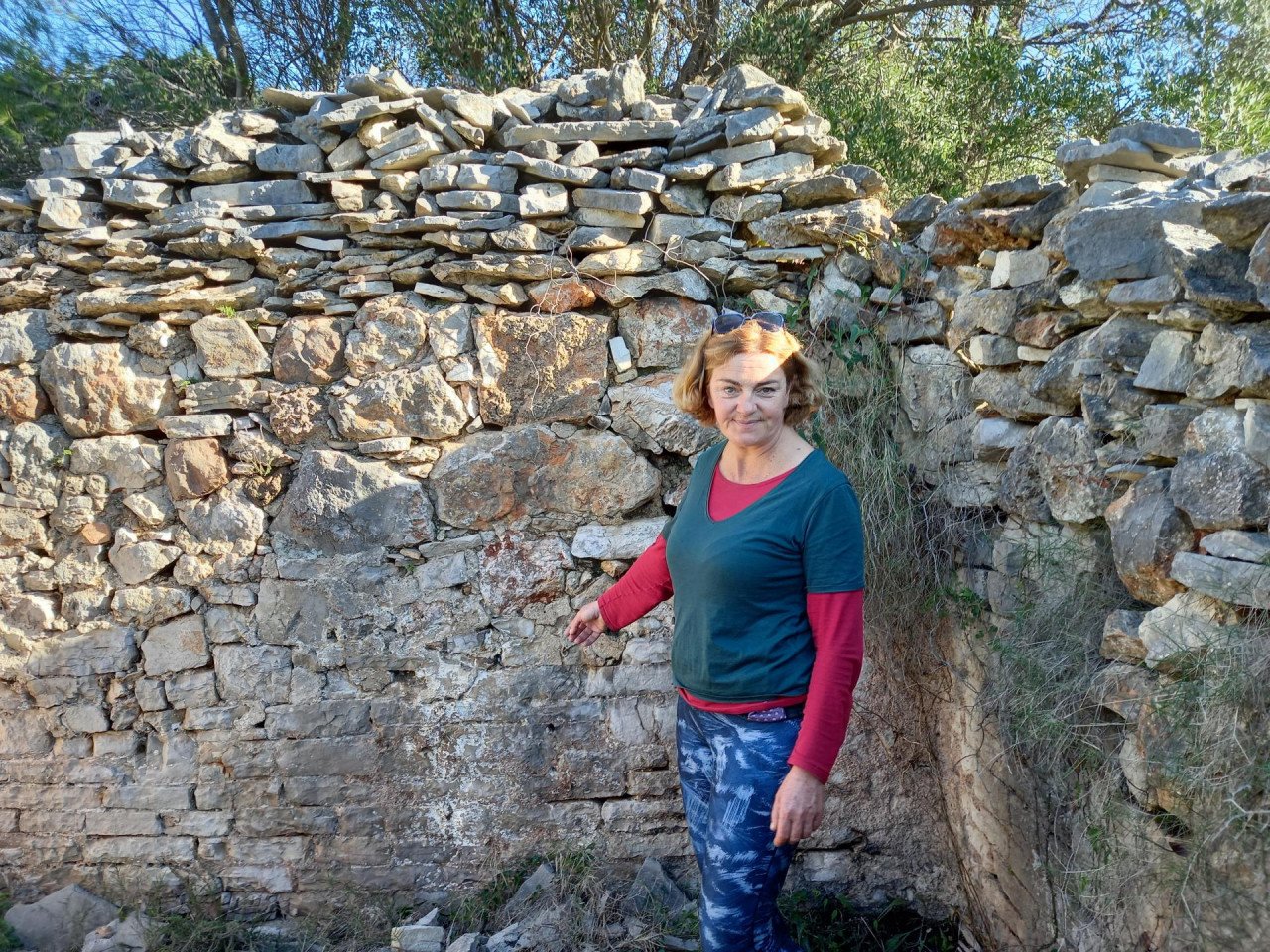
Mirko Crnčević
"On the mainland, we see a large scale luxury Roman farm building whose walls are exceptionally well preserved, and by their construction, we can conclude that they are from an earlier time, meaning from the beginning of the imperial period. We also have pottery fragments possibly dating back to the Roman Republic era, when sea levels were lower than they are now.
The coastal hiking trail passes through an ancient cistern, which on the one hand, is very unstable and will eventually collapse if protection measures are not taken. In the sea, there are structures of walls, floors made of mosaics, terraces, plateaus, and small breakwaters that served in everyday life," adds Katunarić Kirjakov.
On the other side of the bay are ancient tombs, so from everything seen and the findings of vessels from the Early Roman period, it can be preliminary concluded that the site is from the first century BC to the fourth or fifth century AD. Such economic facilities have survived for a long time; they had fertile soil in the hinterland, streams on dry land, drainage canals, and communication with the world took place correctly.
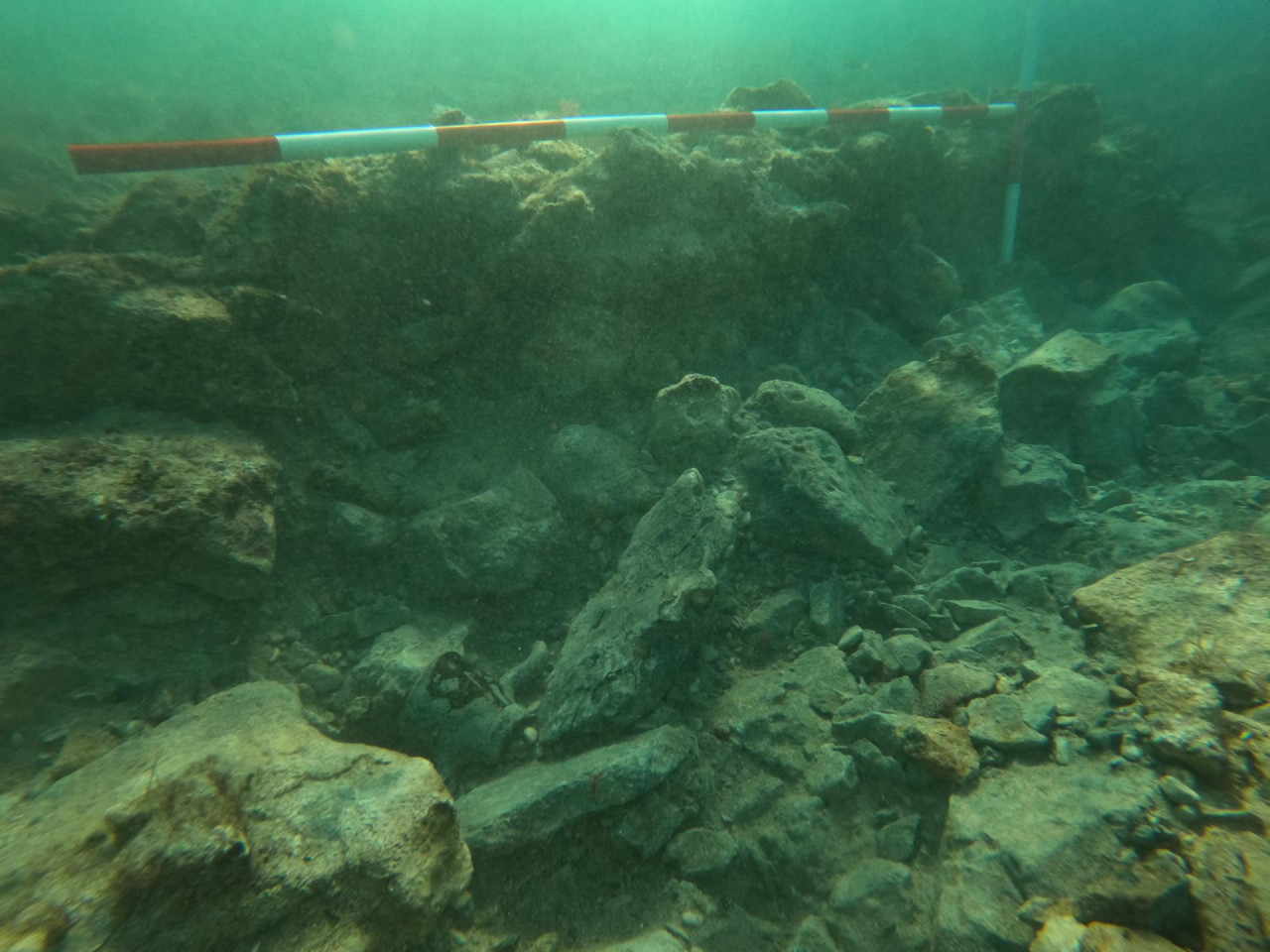
Vedran Katavic
These springs of water are still visible in the sea, and it is brackish; let's say that in antiquity, all the conditions for a beautiful life in that valley, in that bay, were met."
Professor Katunarić Kirjakov's team moved to Stari Grad to continue the earlier research.
"In the area of Bonj/Kamareta, we are exploring the only visible original part of the ancient coast in the Stari Grad bay because it was upgraded and built elsewhere over time. We already have a lot of finds there - fine Hellenistic wine drinking vessels, tableware, amphorae from Greece and Spain, which confirms that the city was connected to the whole rich world at that time."
For more, make sure to check out our dedicated lifestyle section.
Roman Mosaic in Stari Grad on Hvar Discovered Under City Streets
February 15, 2022 - A Roman mosaic in Stari Grad on Hvar has been uncovered thanks to archeological excavations in the historic core of the town.
Protective archeological excavations have begun in the historic core of Stari Grad on the island of Hvar, which together with the Stari Grad Field was included in the UNESCO World Heritage List in 2008. The research carried out by the Institute of Archeology in cooperation with the Stari Grad Museum is a continuation of the excavations carried out in 2021, which precede the installation of a new infrastructure system and water supply and sewerage network, reports Slobodna Dalmacija.
"The research is taking place at sites that hide significant archaeological remains of the Greek Pharos and the Roman Faria, to get better insight into the degree of their preservation and distribution and new contextual data on the rich past of Stari Grad," said research leader Marina Ugarković, a research associate at the Institute of Archeology and leader of the "AdriaCos" project, which also included excavations at several locations in the ancient city (384 BC) during October and November.
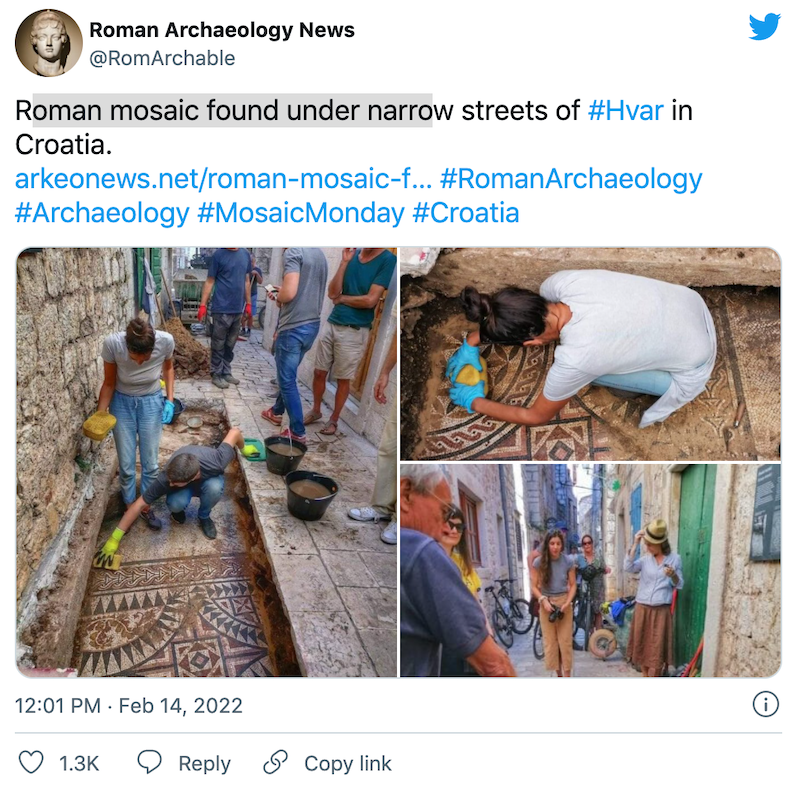
Her deputies at the latest excavations are Andrea Devlahović, curator of the Stari Grad Museum, and Martina Korić, a doctoral student at the Institute of Archeology, under the supervision of Saša Denegri from the Conservation Department of the Ministry of Culture in Split.
Now, archeological works are taking place in the area of Duoljna and Srinja kola, after which the research will be carried out on Vagonj Street, in front of the Sv. Roko Church - the patron saint of the city, and on St. Stephen's Square.
"Already during the first few days of excavations, the continuation of the Roman mosaic in Srinja kola was discovered, whose segments are already known to experts and the general public. Depending on the final results of the archeological works, the competent body of the Conservation Department in Split will determine further measures for the protection of the cultural property and the conditions for the continuation of construction works at the mentioned location," explained Dr. Ugarković.
For more, check out our lifestyle section.
5-star Moeesy Blue & Green Oasis Hotel Opening in Hvar Town this Summer
February 14, 2022 - Moeesy Blue & Green Oasis Hotel will transform the existing Hotel Croatia into a 5-star hotel with 37 rooms, 4 suites, and an exclusive presidential suite.
Hvar town will be enhanced thanks to another five-star hotel this summer, reports Dalmatinski Portal.
This blue-green oasis is located on the promenade by the sea, on a green area of approximately 5000 m2. Croatia-Hvar d.o.o. has launched an investment worth 100 million kuna, which includes the reconstruction and rehabilitation of the existing facility and environment of Hotel Croatia, which has so far worked in the 3-star category. The investment comprises raising the categorization of the hotel to five stars, so the company's management has decided to re-brand the hotel, which includes changing the name. The new hotel will be named MOEESY BLUE & GREEN OASIS because the name merges a mosaic of blue and green oases that, like poetry, merge into peace and beauty that will provide tourists accommodation within its beautiful surroundings.
This is a financially valuable and very demanding construction investment, given that it is a complete reconstruction and rehabilitation within the existing hotel building. A beautiful stone staircase will remain inside the hotel, and everything else is in the process of full reconstruction.
The hotel will have 41 accommodation units, including 37 rooms, four suites, and an exclusive presidential suite. Modern and airy design is a hotel feature and will surely delight tourists at the hotel. The restaurant will showcase direct contact of the chef with hotel guests through show-cooking, with a cascading restaurant, bar, and booths. The pleasant ambiance and accessibility to each guest are the qualities that have adorned the hotel's current management and staff, which will be maintained and continuously raised to an even higher level. As a result, hotel guests will be provided with the highest level of luxury during their stay.
The big news is that the hotel will have an outdoor pool located west of the hotel which will be organized in cascades to monitor the configuration of the terrain. In addition, this facility will have an indoor pool and spa center that will offer massages, a sauna, and a large gym. This content ensures that the hotel can operate outside the summer period, i.e., deep in the pre-season and post-season, which is the goal of hotel management and part of the national strategy of Croatian tourism. The works on the reconstruction and rehabilitation of the hotel include the complete arrangement of horticulture around the building itself so that a green oasis is maintained around the hotel and preserves the recognizability that the building has had so far. The horticulture project includes replacing old trees with young ones representing Mediterranean cultures. Furthermore, all existing palm trees will be retained, so there will be an alley of palm trees in the southern part of the hotel.
This investment can be called a 'family hotel and project' because it has the unique feature that three generations of one family participate in the management and ownership of the hotel. Stanislav Visković is the director of the company and a representative of the third generation that runs the hotel and works to improve the quality of work and hotel offerings.
"This investment will enrich the offer of Hvar town and the entire Croatian tourism and follow the trends of investing in high category facilities for which there are special interests of tourists. In the Croatian tourist market, the task is to achieve that," says Visković.
While the pandemic created significant problems in the tourism market, it also pointed to the need to invest in very high-capacity facilities because such facilities had excellent occupancy during the pandemic. Visković further emphasizes the critical role of partners in implementing this project.
"This project, with the funds of the investor company and the support of HAMAG-BICRO, is monitored by Hrvatska poštanska banka, which has become a financial and operational partner of the project because they are involved in the complete course of project preparation and implementation. Furthermore, the management of Hrvatska poštanska banka, especially the Split office, monitors and directly supports the project itself. Therefore, the opening of the hotel will be a source of pride for all of us who have truly participated in the project in partnership," he says.
The construction should be completed by May 1, 2022, after which the hotel will be equipped with furniture, obtain a use permit, and finalize categorization. The hotel should receive its first guests at the end of June 2022. The expected markets are the USA, Great Britain, France, Australia, Germany, and other markets with higher spending power. An overnight stay in a hotel in the peak season will be from 600 to 800 euros in double rooms and from 1160 to 1800 euros in apartments, depending on the category of the room or suite.
For more, check out our lifestyle section.
Amfora Hvar Grand Beach Resort Features in ABC's The Bachelor
February 13, 2022 - Amfora Hvar Grand Beach Resort is a proud participant in an upcoming episode of ABC’s “The Bachelor.”
The episode will feature the picturesque Amfora Hvar Grand Beach Resort property as the home for the week for the newest Bachelor, Clayton Echard, and the lucky ladies vying for his heart. This episode of “The Bachelor,” currently in its 26th season, is scheduled to air Monday, February 14, at 19:00 (CST).
The Bachelor on ABC
On ABC’s hit primetime reality series “The Bachelor,” one lucky man is offered the chance to find true love. A single and eligible bachelor embarks on a romantic journey, getting to know a number of beautiful women, gradually narrowing the field as he continues his search for his soul mate. At the end of this romantic voyage, if he has found the one, will there be a proposal — and will she say yes? “The Bachelor” is produced by Next Entertainment and Warner Bros. Unscripted Television in association with Warner Horizon.
Amfora Hvar Grand Beach Resort
The Amfora Hvar Grand Beach Resort is idyllically located in a private bay, featuring an exquisite cascading pool area with mini-islets throughout, a restaurant, and a swim-up bar. It offers a wide range of activities suitable for couples, families, and groups. The communal areas are spacious and open-plan, and rooms are light and airy, with lots of glazing and contemporary décor. The penthouse suites are located on Amfora’s top floor for maximum privacy, with floor-to-ceiling windows and open spaces bathed in bright natural light with indoor and outdoor dining facilities. The surrounding area is embellished by various lush greenery, with a stunning pebble beach located just steps away from the hotel’s entrance. Hvar city is located just a short walk away along the stunning promenade. Amfora is the perfect place to enjoy your holiday with the most beautiful wrap-around view of the bay and Paklinski Islands. You can learn more about Amfora Hvar Grand Beach Resort here.
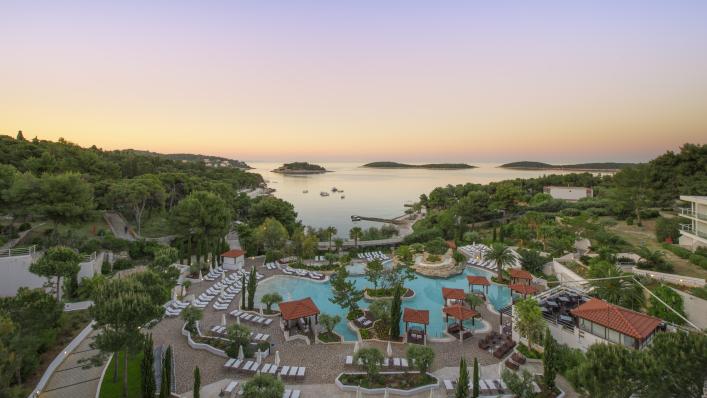
Suncani Hvar
The island of Hvar has always been a desirable filming location and is a great place to shoot movies and series. In the past few years, film tourism has become a new travel trend for many tourists who want to take pictures or visit the locations of their favorite movies or series. However, the island of Hvar was recognized as a desirable filming location some fifty years ago, when the feature film The Deep was filmed by famous American director Orson Welles. Another movie that was filmed was The Odyssey, about the famous underwater explorer, Jacques Cousteau. Much of the filming took place in the town of Hvar, Jelsa, Stari Grad, and the Paklinski Islands. Moreover, a few years ago, an advertisement for Jean Paul Gaultier was shot on Hvar, which featured beautiful scenes from the pebble beach Dubovica and the popular Hvar promenade in the center of Hvar.
The American reality show WAGS Miami - wives and girlfriends of high-profile sportsmen was also filmed on Hvar. Filming took place all over the island and in hotels Amfora and Adriana. The show was aired on E! Entertainment, part of NBCU Universal. In addition, the British reality show Made in Chelsea was also shot on Hvar, which included various island locations. This served as an excellent advertisement that attracted young Britons to this desirable destination. Most recently, the popular NetFlix culinary series Somebody Feed Phil was filmed in September last year. The filming took place at hotel Palace Elisabeth and in the town of Hvar.
Find more information on “The Bachelor” here.
For more, check out our lifestyle section.
Jelsa Tackles Light Pollution in Effort to Become International Dark Sky Community
February 3, 2022 - Harmful outdoor lighting fixtures were removed from a park in the centre of Jelsa, getting the town on Hvar island a step closer to becoming the first International Dark Sky Community in Croatia
The spotlights in question have a colour temperature of 6500 K which is considered detrimental to local wildlife - birds, nocturnal insects, bats, and even plants. They were installed on palm trees in the park and turned upwards, making them a light pollutant of the night sky, reports the Croatian Astronomical Union.
The Croatian Astronomical Union has been collaborating with Jelsa Municipality and the local tourist board for over a year in order to help Jelsa achieve high standards of protection against light pollution. Jelsa is now a step closer to becoming the first International Dark Sky Community in Croatia and south-east Europe at large.

Hrvatski astronomski savez - Facebook
In December 2021, the International Dark-Sky Association (IDA) accepted the motion of Jelsa Municipality to be declared an International Dark Sky Community. A few days ago, IDA delivered a favourable opinion and it’s now only a matter of time before Jelsa is granted the coveted title.
As defined by IDA, an International Dark Sky Community is ‘a town, city, municipality or other legally organised community that has shown exceptional dedication to the preservation of the night sky through the implementation and enforcement of a quality outdoor lighting ordinance, dark sky education and citizen support of dark skies. Dark Sky Communities excel in their efforts to promote responsible lighting and dark sky stewardship, and set good examples for surrounding communities.’
Croatian Football Federation to Host UEFA Executive Board Session on Hvar
January 19, 2022 - The Croatian Football Federation announced on its official website that it would host a UEFA Executive Board session on Hvar in September this year.
The session could be critical in the context of the fight with FIFA over the biennial World Cup and the latest preparations for the World Cup in Qatar, which will be held from November 21 to December 18, 2022.
The leadership of the Croatian Football Federation has expressed interest in hosting a session of the Executive Board, and the Federation's headquarters confirmed that UEFA accepts the proposal. Accordingly, the UEFA session will be held on September 21 in Hvar.
"We look forward to holding this session in Croatia and have the opportunity to explore your beautiful country further," reads a letter signed by UEFA Secretary-General Theodore Theodoridis, quoted by the HNS website.
"I thank President Alexander Čeferin and the UEFA leadership for the great trust they have shown us. We are pleased with this decision because it confirms the excellent status that HNS enjoys in UEFA, and I am convinced that we will once again prove ourselves as excellent hosts and capable organizers of such events," said HNS President Marijan Kustić.
The UEFA Executive Board last met in Croatia in 2013, when the session was hosted in Dubrovnik.
Gol.hr reports that HNS president Marijan Kustić and his right-hand man and Čeferin's legal colleague Tomislav Svetina certainly did not accidentally throw Hvar on the table, which is an elite destination of Croatian tourism. Still, there is another important point in the whole story.
Well-known Slovenian lawyer and since September 2016 the leader of European football, UEFA President Aleksander Čeferin, will combine business and pleasure on Hvar.
Namely, Čeferin has been spending his summers on Hvar for many years. Moreover, he has a house in the small town of Zavala, approximately in the central part of the sunniest Croatian island, and on the south side.
Hvar locals already know him well. Čeferin has a beautifully decorated house about 200 meters from the sea, and tall palm trees were brought by truck and planted in the garden. From the home terrace, there is a fantastic view of the open sea, and in the immediate vicinity is a small vineyard that completes the experience.
The UEFA Executive Board has 20 members, among them the former president of the HNS and still the top scorer of the Croatia national team - Davor Šuker.
Among the most famous people in the Croatian public are Karl-Heinz Rummenigge, a legend of German football and Bayern, and the president of PSG Nasser Al-Khelaifi. Both are members of the UEFA IO as representatives of the European Club Association (ECA), while the famous Spaniard Javier Tebas represents the Europa League (EL).
All major football nations have their representatives among the members of the IO. Sixteen of them are elected by the UEFA Congress, two representatives are given by the ECA and one by the EL, and the UEFA President has a seat on the IO by the logic of things.
Gol.hr assumes that Dejan Savičević, President of the Montenegrin Football Federation and one of the six UEFA envoys to the FIFA Council, will also attend the session.
As the UEFA President can invite third parties to attend UEFA Executive Board meetings in an advisory capacity, we expect other well-known football names.
To read more about sport in Croatia, follow TCN’s dedicated page.
Winter Tourism on Hvar: Polar Donkeys Traditional New Year Swim in Bright Sunshine
January 1, 2022 - Croatia's premier sunshine island of Hvar welcomes 2022 in traditional fashion, as the Polar Donkeys take to the Adriatic for the first swim of the year.
People start a new year in different ways. Many with new resolutions, many more with hangovers.
But if you are looking for a novel way to blow away the cobwebs of the previous year, head to Bonj les Bains at 13:00 on New Year's Day where the annual New Year's Day swim, organised by Polarni Tovari (the Polar Donkeys) takes place.
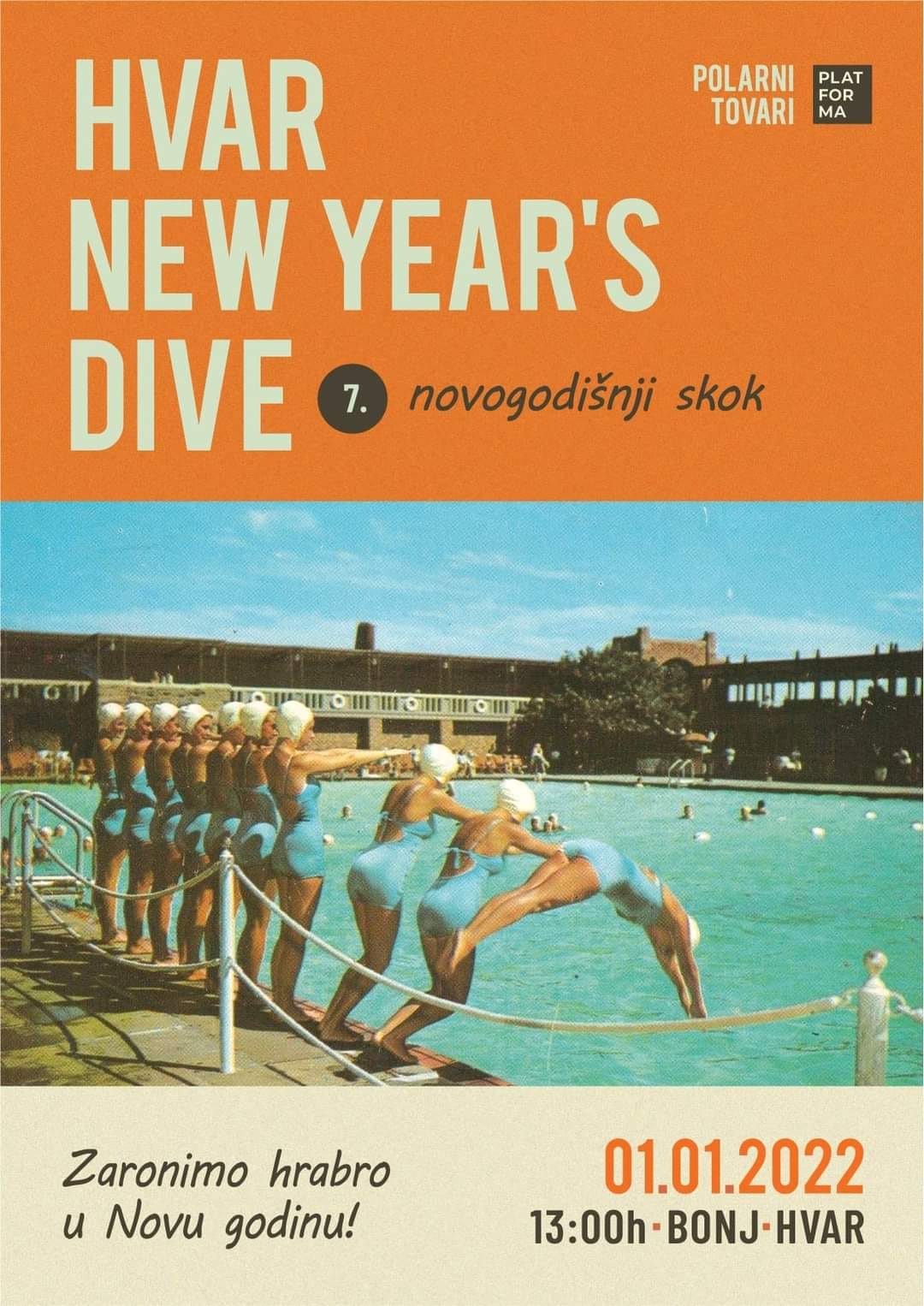
Now in its 7th year, the Polar Donkeys swim is attended each year by an increasing number of enthusiasts of the two and four-legged variety, and 2022 was no exception, as you can see from this year's video, below.
Hvar, of course, is no stranger to winter tourism, for it was hear that organised tourism in Europe began back in 1868, with the formation of the Hvar Health Society. The 'Austrian Madeira', as Hvar was known to convalescing aristocrats from the Austro-Hungarian Empire, was famed for its temperate 12-month climate.
With the 2022 Hvar swimming season now officially open, why not jump in yourself?
Alternatively, there is plenty of other activity on the Adriatic at this time of year.
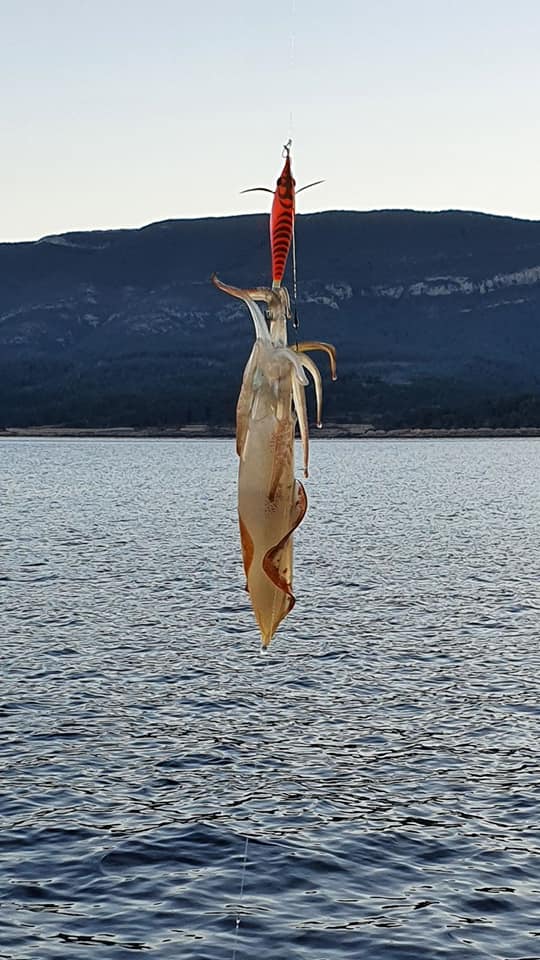
(Photo credit Taliah Bradbury)
TCN Junior took to the waters around Hvar yesterday to try her hand at squid fishing. And with considerable success, but with the fishing and with the camera, two skills her father has so far failed to master.
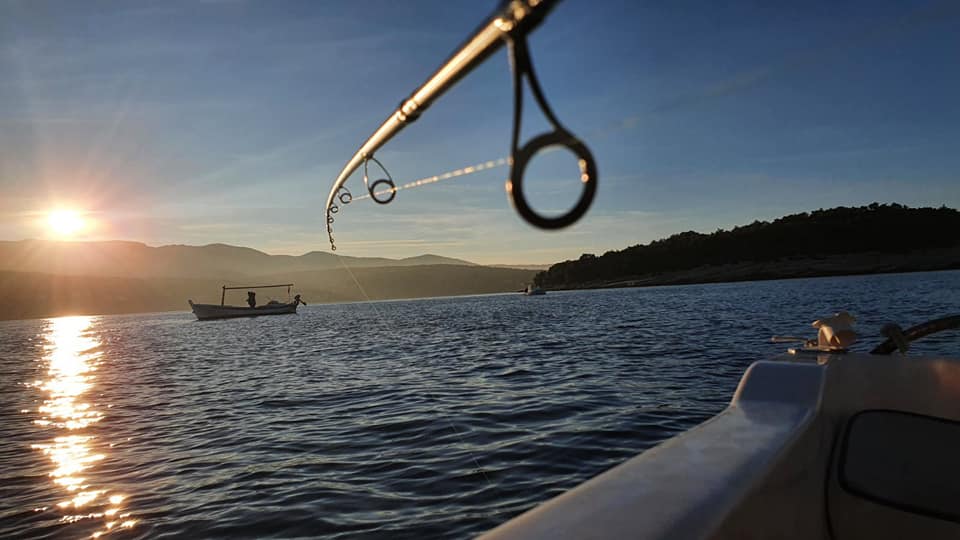
There may have been bigger parties elsewhere, but there is something soothing about Dalmatia away from the crowds, away from the season.
If you have never tried it and are looking for a complete detox, there is nothing quite like it.
As for swimming on New Year's Day, that is also a skill I have yet to master, but I heartily commend the brave Polar Donkeys who maintain this wonderful tradition.
To learn more about the magic of this incredible island, check out the TC Hvar in a Page guide.


